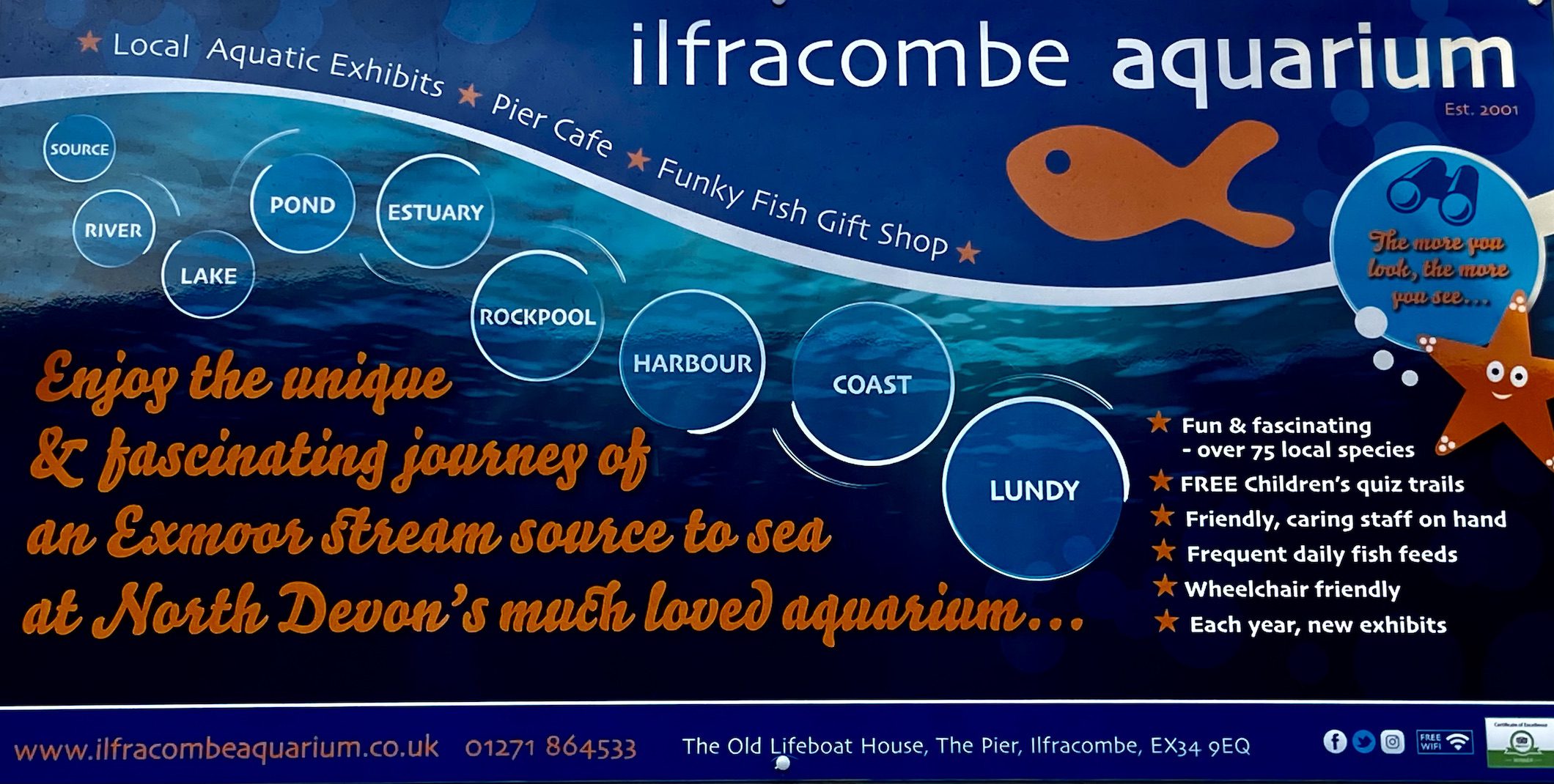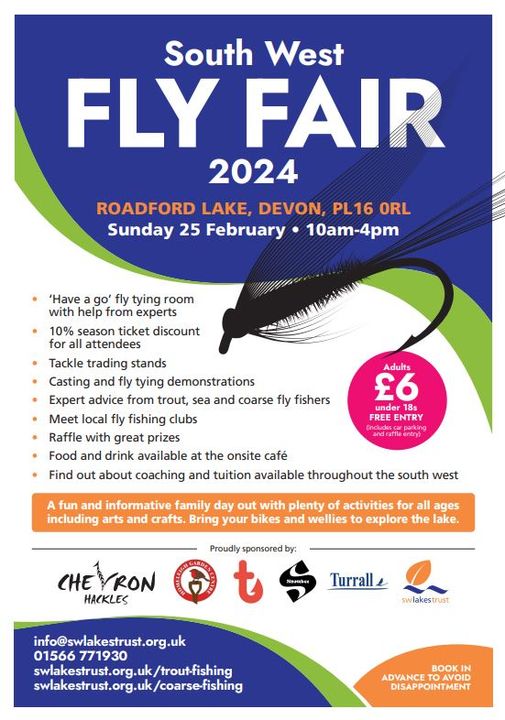
Passionate Young Angler seeks Sponsorship to chase his dream
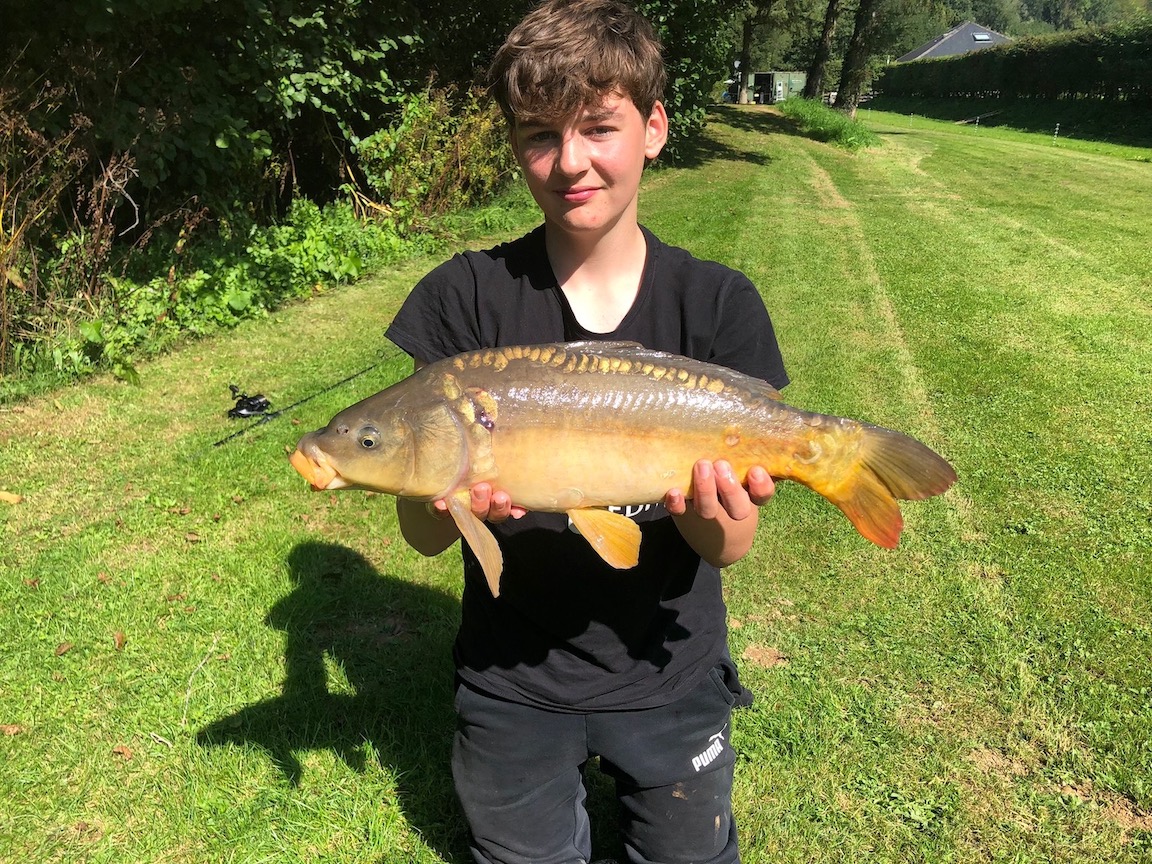
Max is a very passionate fisherman and long time member of Dulverton Anglers Association. He is currently in the England Youth Fly Fishing Team and has already 2 caps to his name so this will be his 3rd International match this year.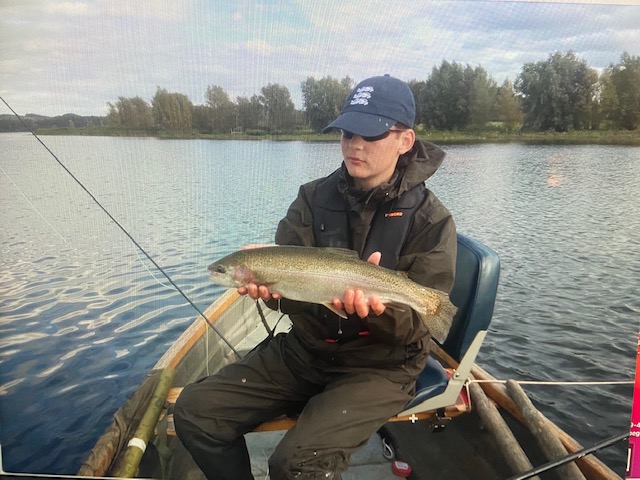
He is also the Loch Style National Youth Championship winner, (catching 11 and 2nd place caught 4)
Max spends most of his time either fly fishing or carp fishing
Max turns 16 this year and has been offered a place at Sparsholt College, in Hampshire to study Fishery Management Level 3. Although the course is funded, he will need to board due to the distance. Therefore he is looking for sponsorship in order he can fulfil his passion (dream).
If you can help young Max please contact Lance Nicholsons at Dulverton
COMBE MARTIN SAC – ILFRACOMBE HARBOUR FUN & SPECIES
Combe Martin SAC have launched a new fishing community project with the help of keen species enthusiast Toby Bassett. The new fun fishing event was launched on February 1st on Ilfracombe Pier with local anglers starting an 11 month long species hunt that encourages anglers to catch as many species as possible from Ilfracombe Harbour area.
The essence of the fun fishing league is to encourage local anglers to socialise and share knowledge. Local business are supporting the event with prizes already pledged from Ilfracombe Aquarium, High Street Tackle, Turton’s Butchers and Quay Sports.
A pop up fishing event to get the event started was attended by a mixture of old and new club members. The weather was kind with a clear sky and a calm sea. Nine species of fish were caught during the three hours including; common shanny, rock goby, pouting, whiting, conger, dogfish, ballan wrasse, plaice, pollock and shore rockling. Prizes donated by High Street Tackle were awarded to Ross Stanway who caught the most species on the day. To Zephyr Laramy the most fish caught by a Junior and the smallest fish prize was awarded to Toby Bassett who caught a tiny common shanny using a size 16 hook!
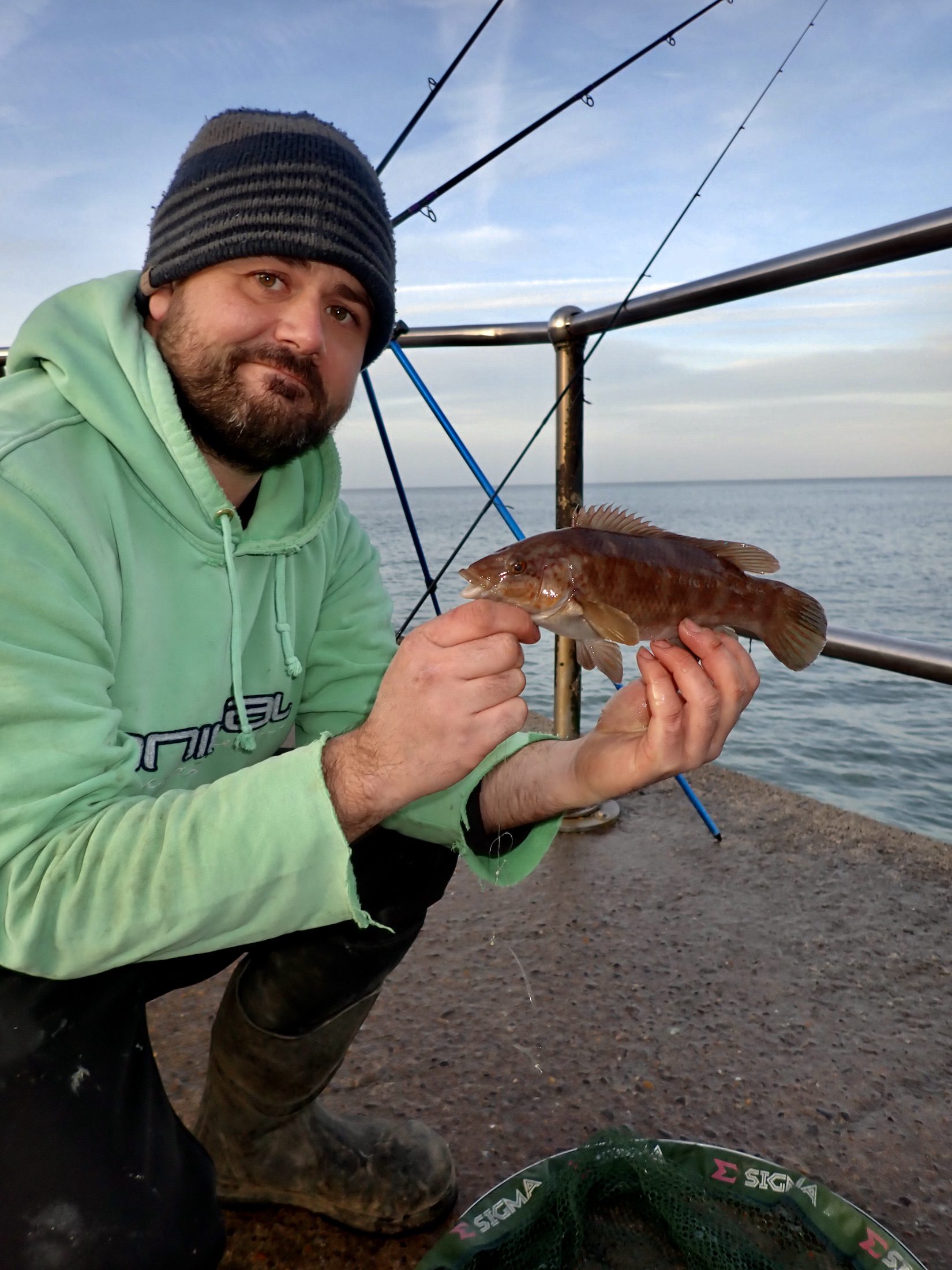
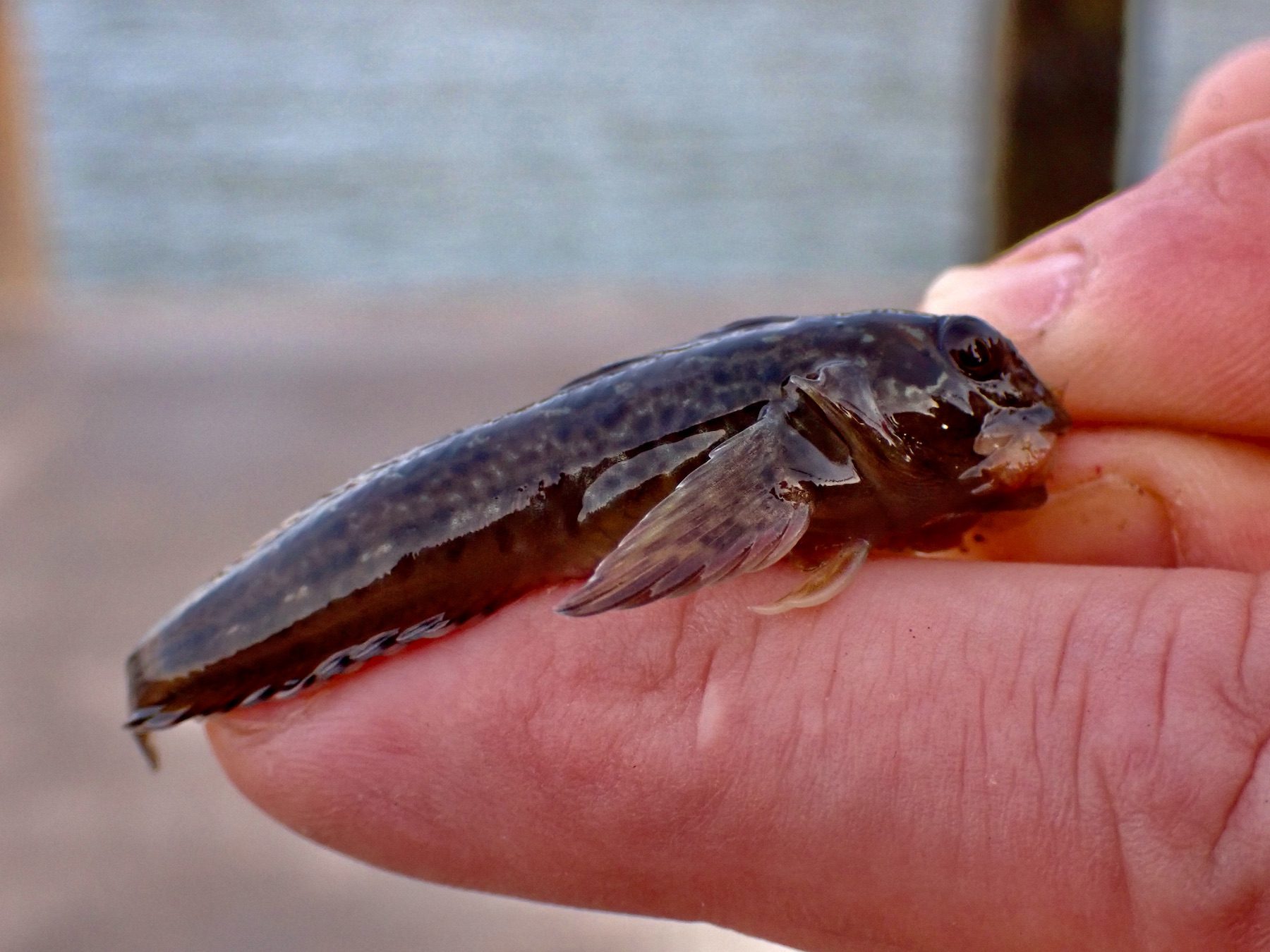
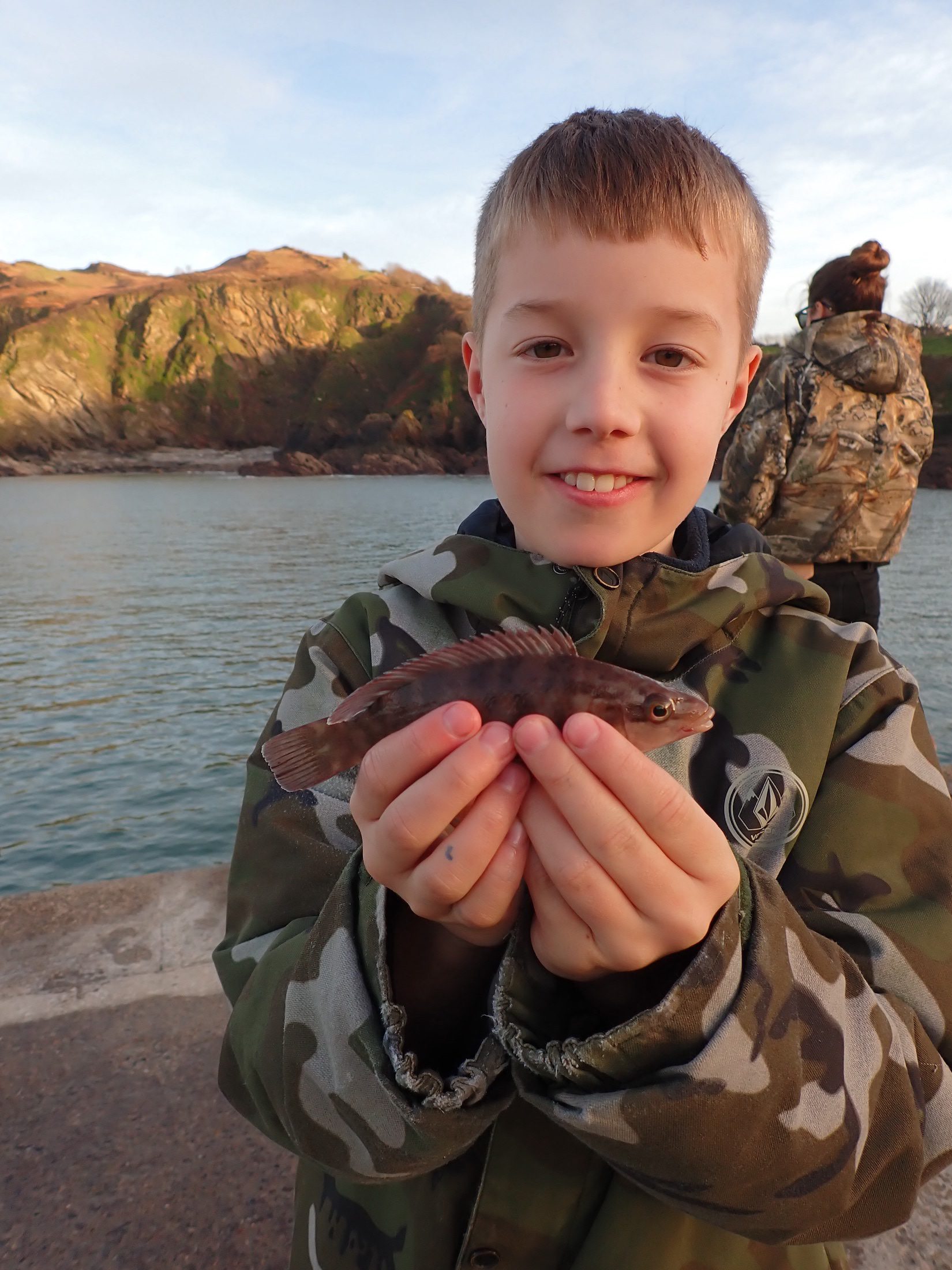
The intention is to hold a pop up event once a month that will be picked to coincide with a suitable tide and hopefully good weather. Notice will be sent to club members seven days prior to the event. The competition runs until December 31st 2024 with major prizes to be presented early in 2025. Sponsors will be donating prizes with High Street Tackle providing a small prize each month for a category to be decided each month. February prize will be for the most species registered. March will be for the best photograph.
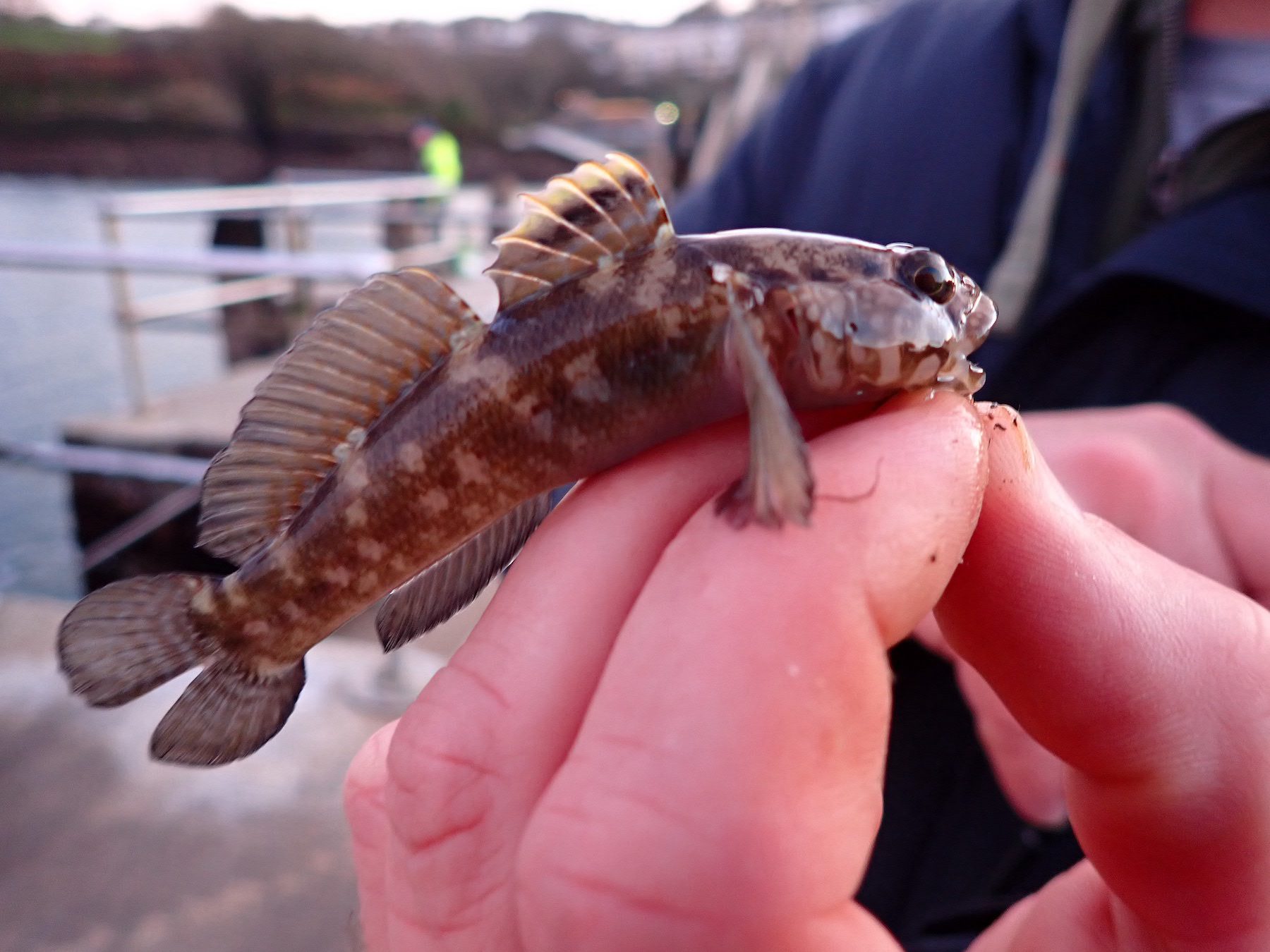
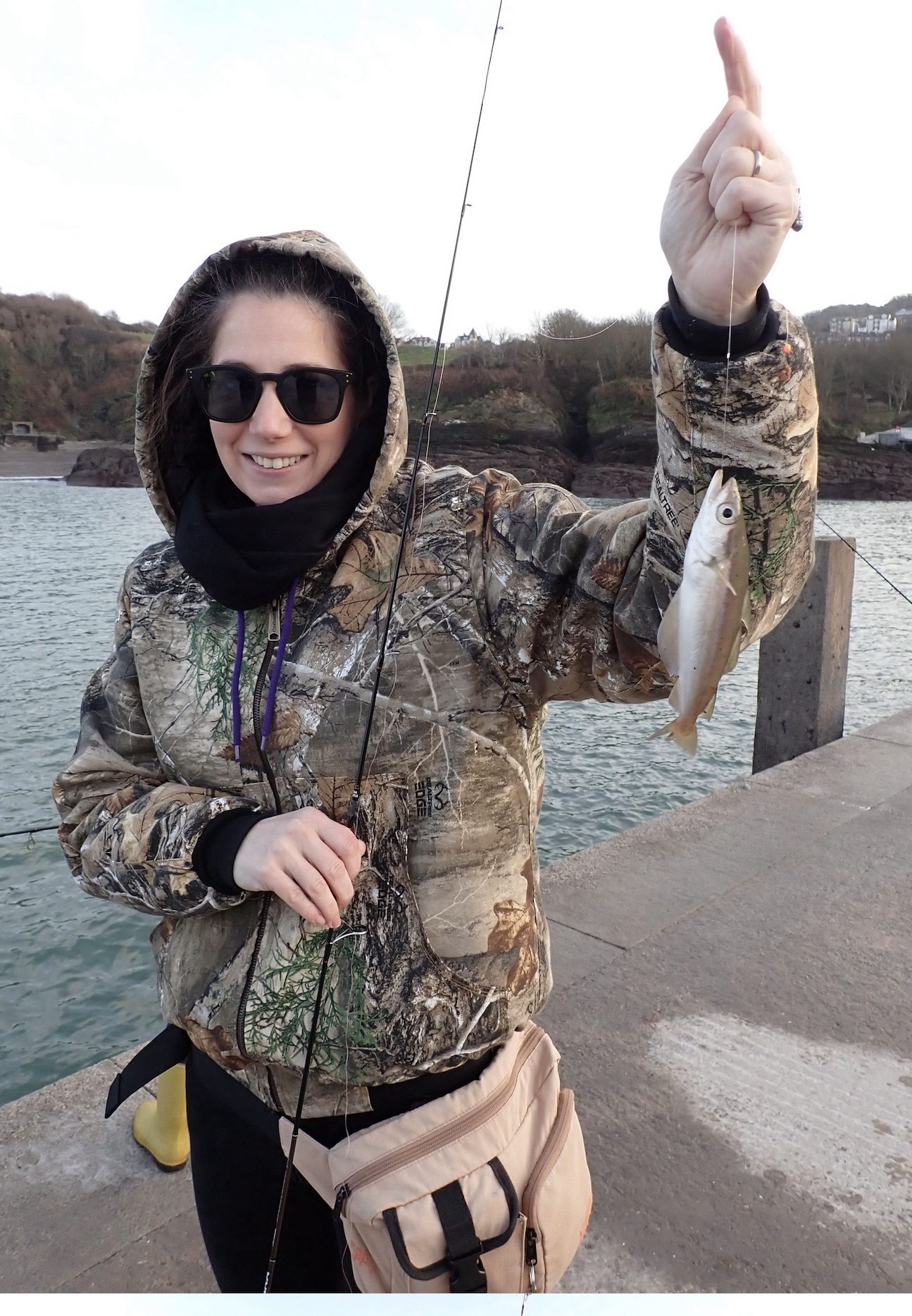
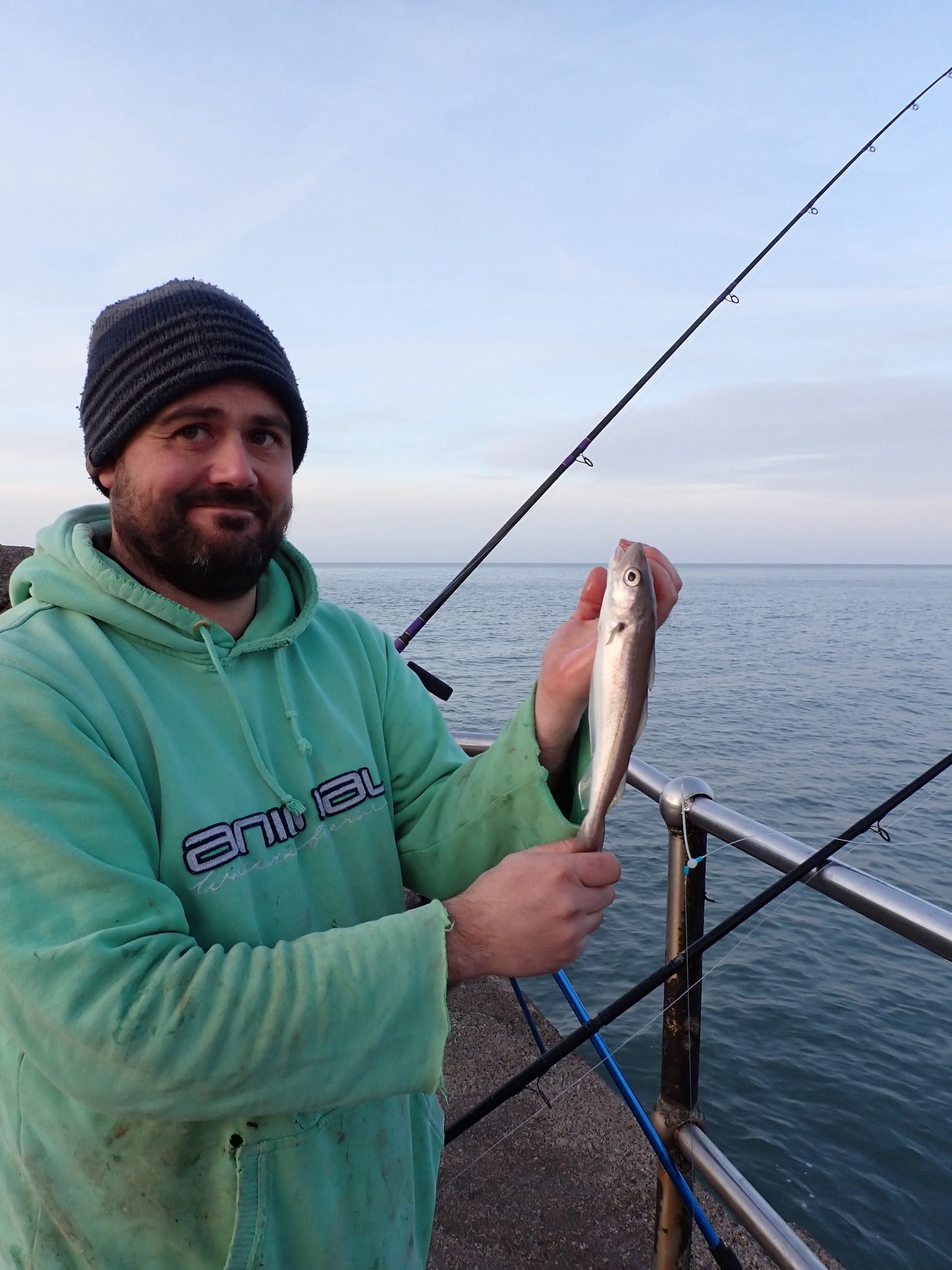
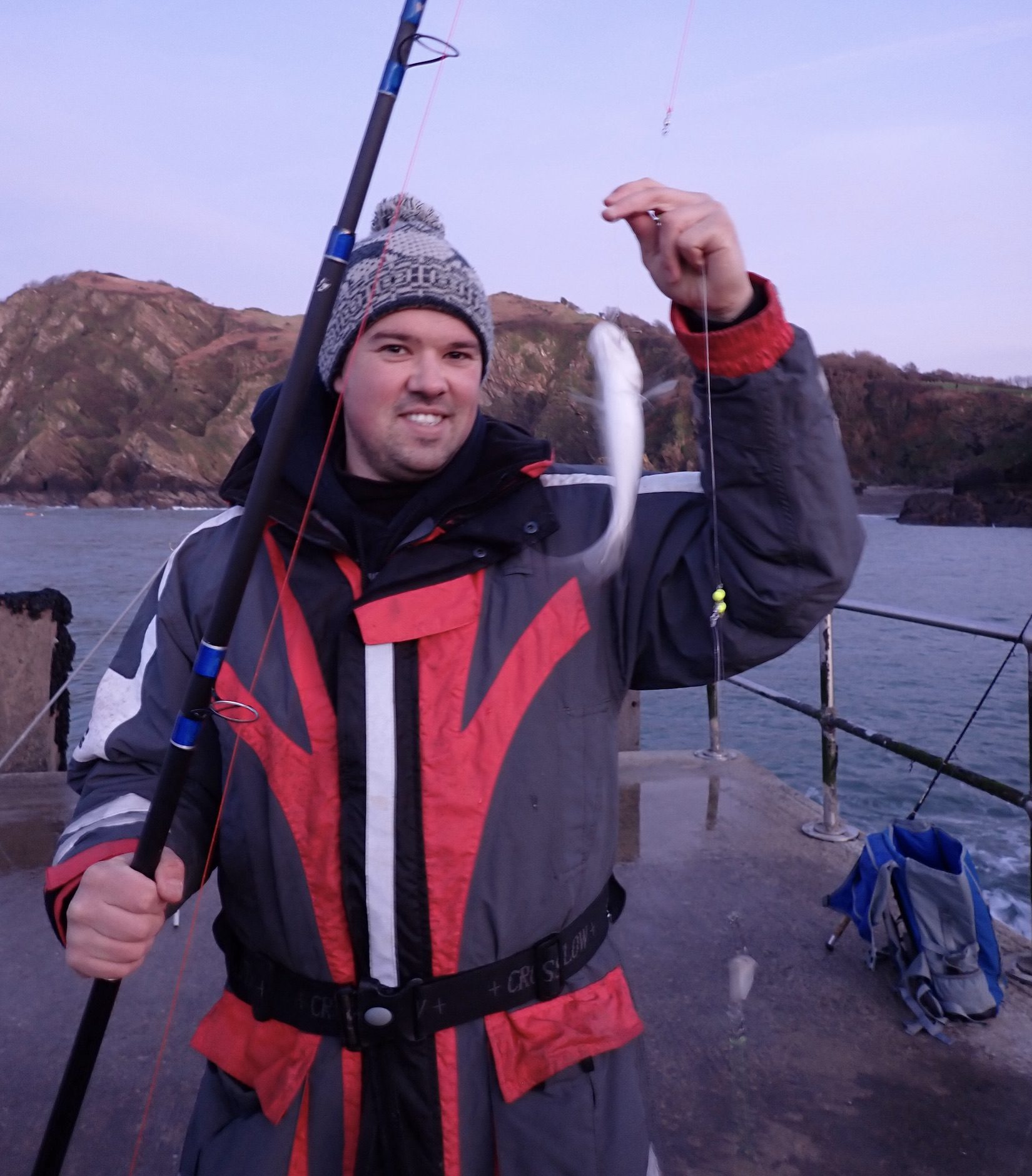
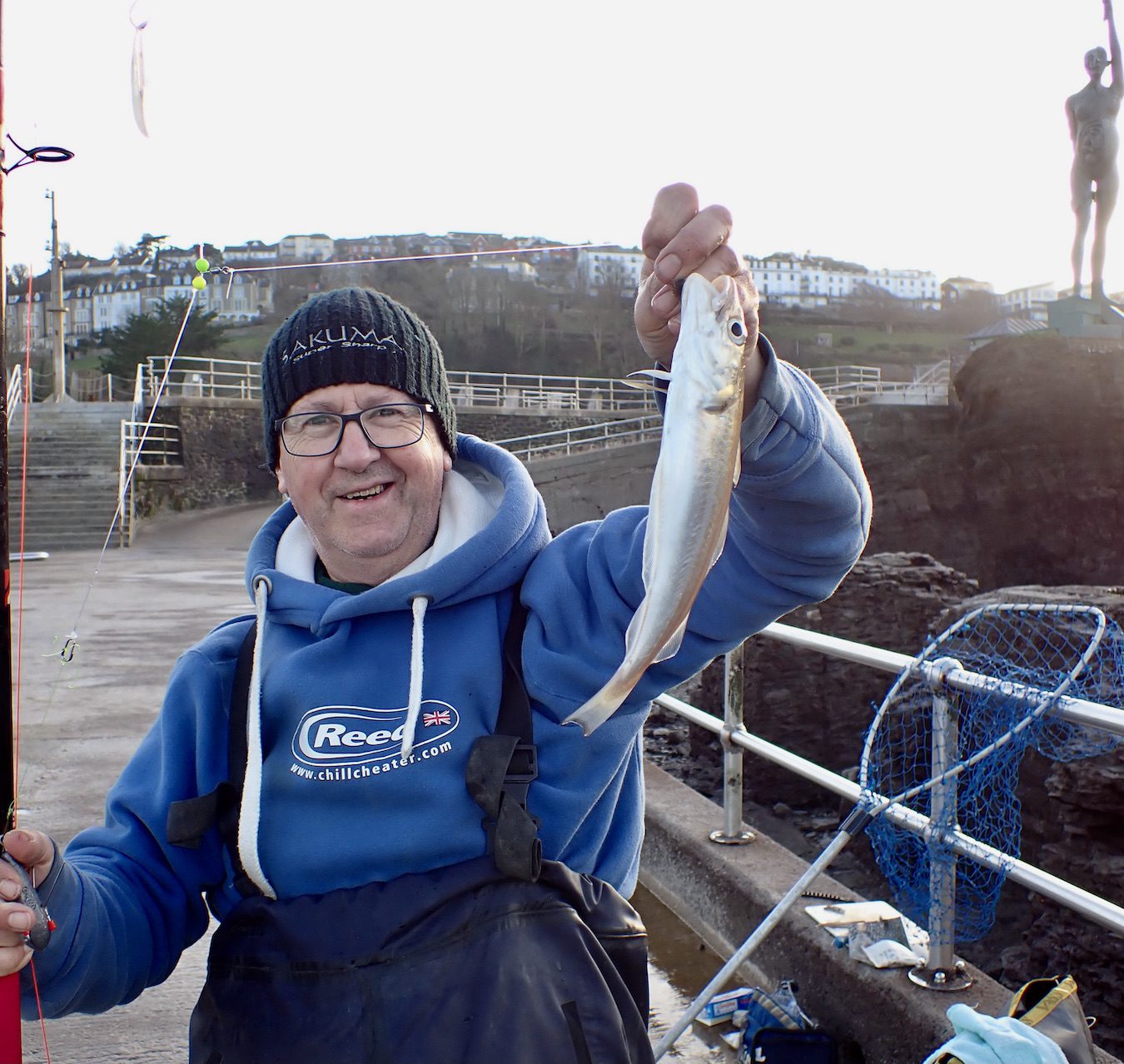
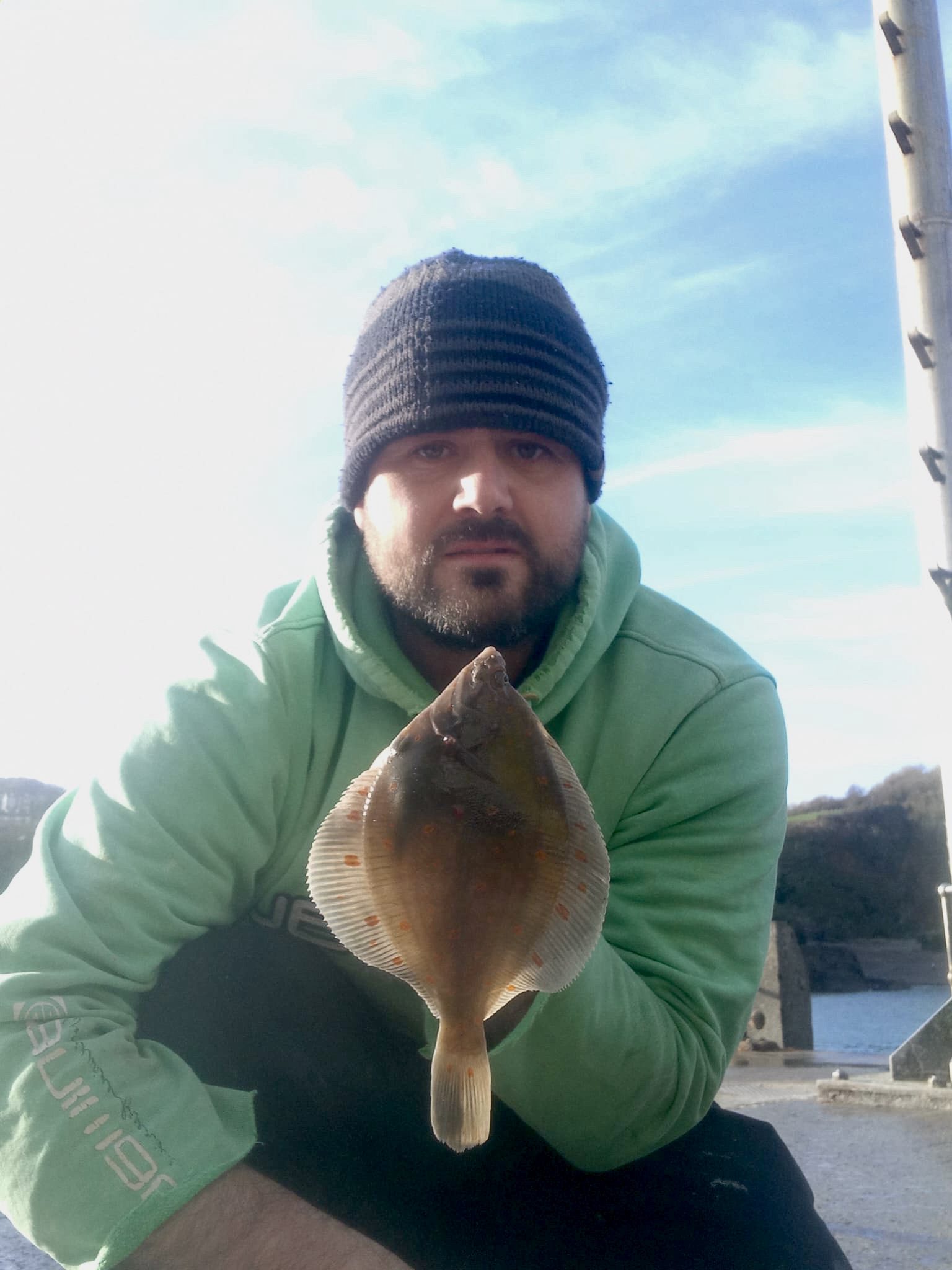
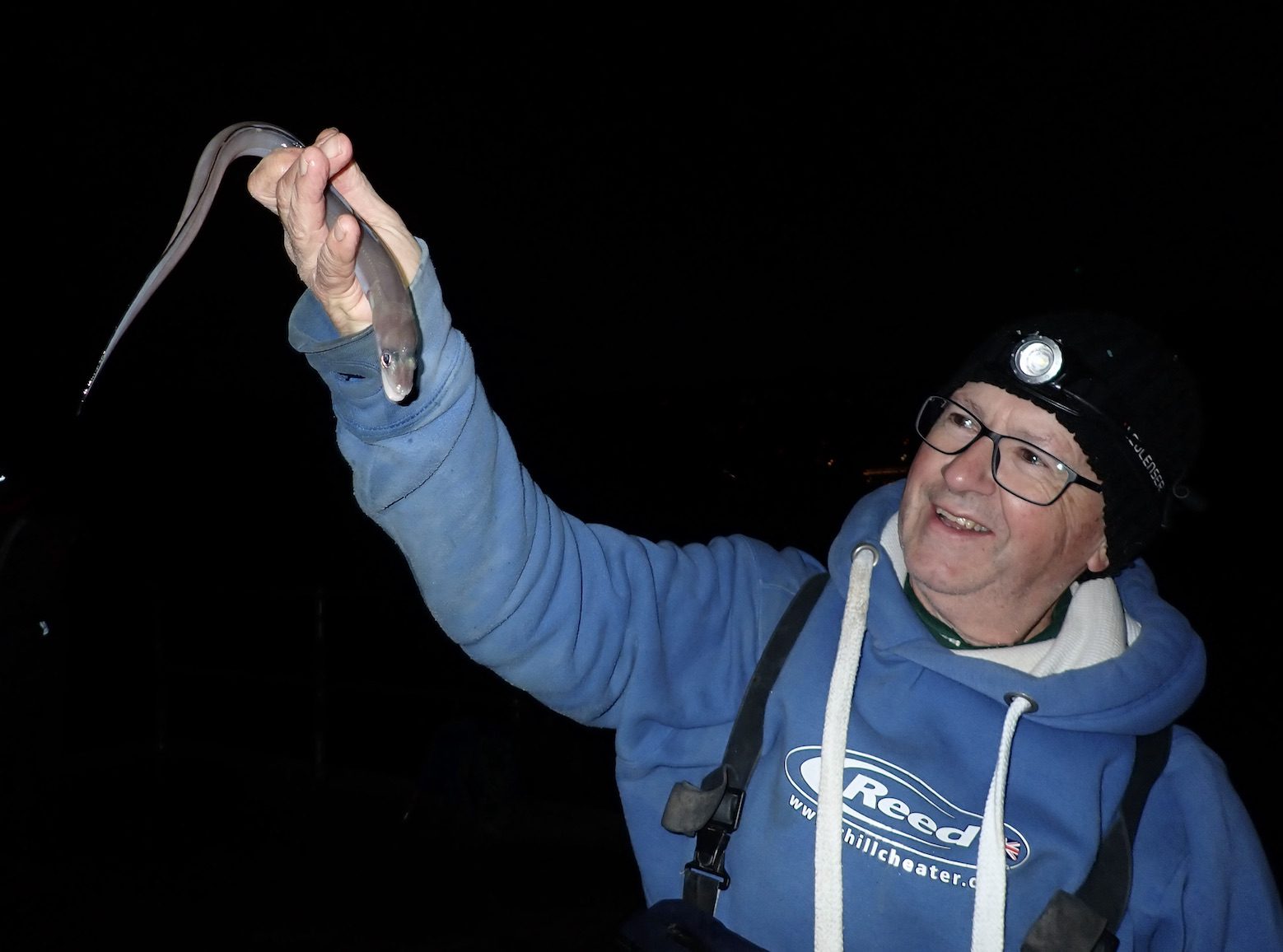
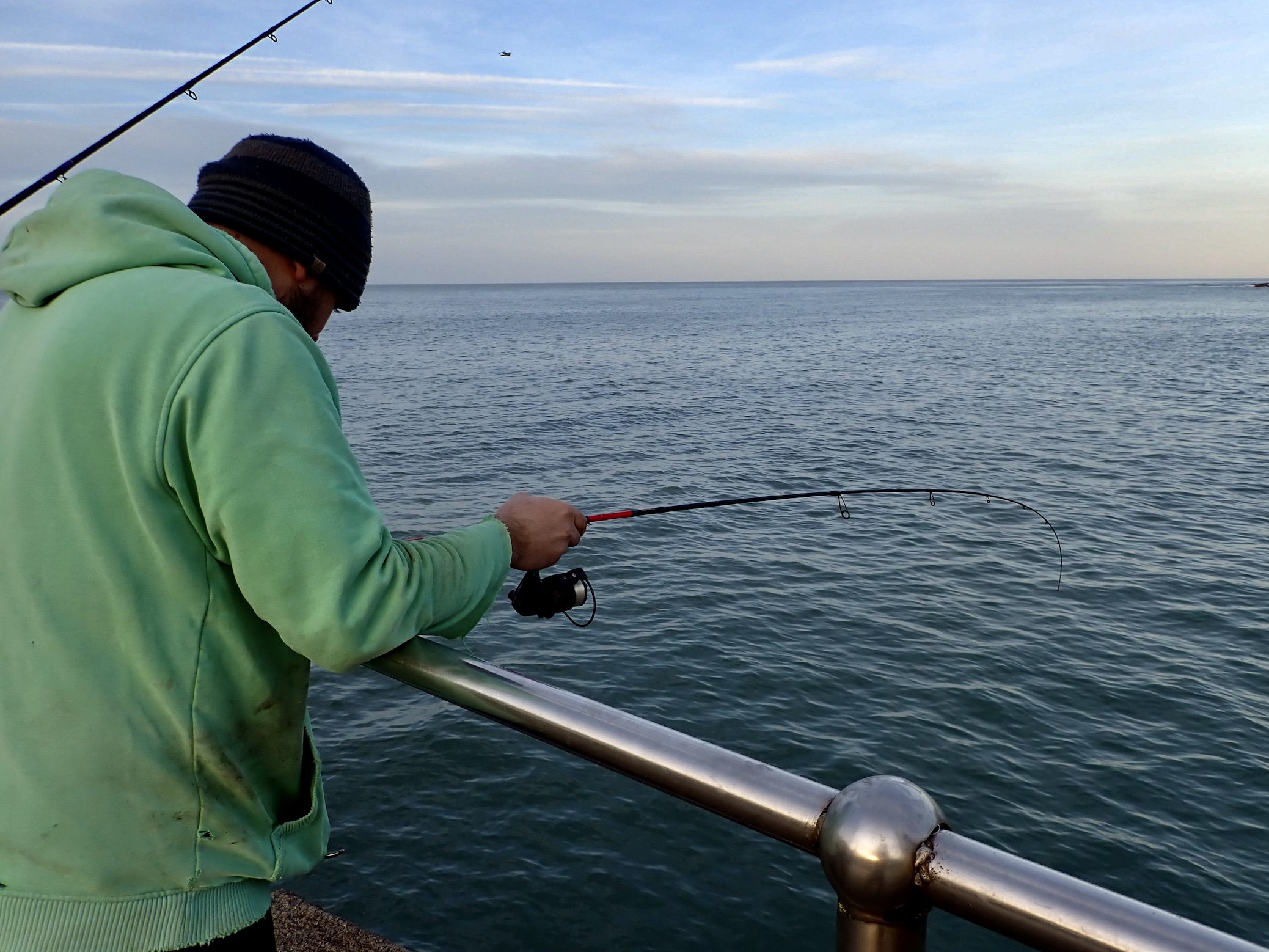
This is not a pure LRF competition as all accepted angling methods are encouraged with bait as well as lures. The use of LRF tactics is a branch of angling that undoubtedly opens an entirely new dimension to sea angling with some becoming totally addicted to the pursuit of the range of species available. It is going to be fascinating to explore the vast range of species that dwell within Ilfracombe waters. We will be sharing our results with the local Aquarium and hope to provide a few exhibits for their extensive display tanks.
We packed away as the flooding tide pushed us off the lower landings. James and I headed to the Bay-side Burger Bar to round off an enjoyable session savouring our spicy chicken and fries in the shadow of Verity.

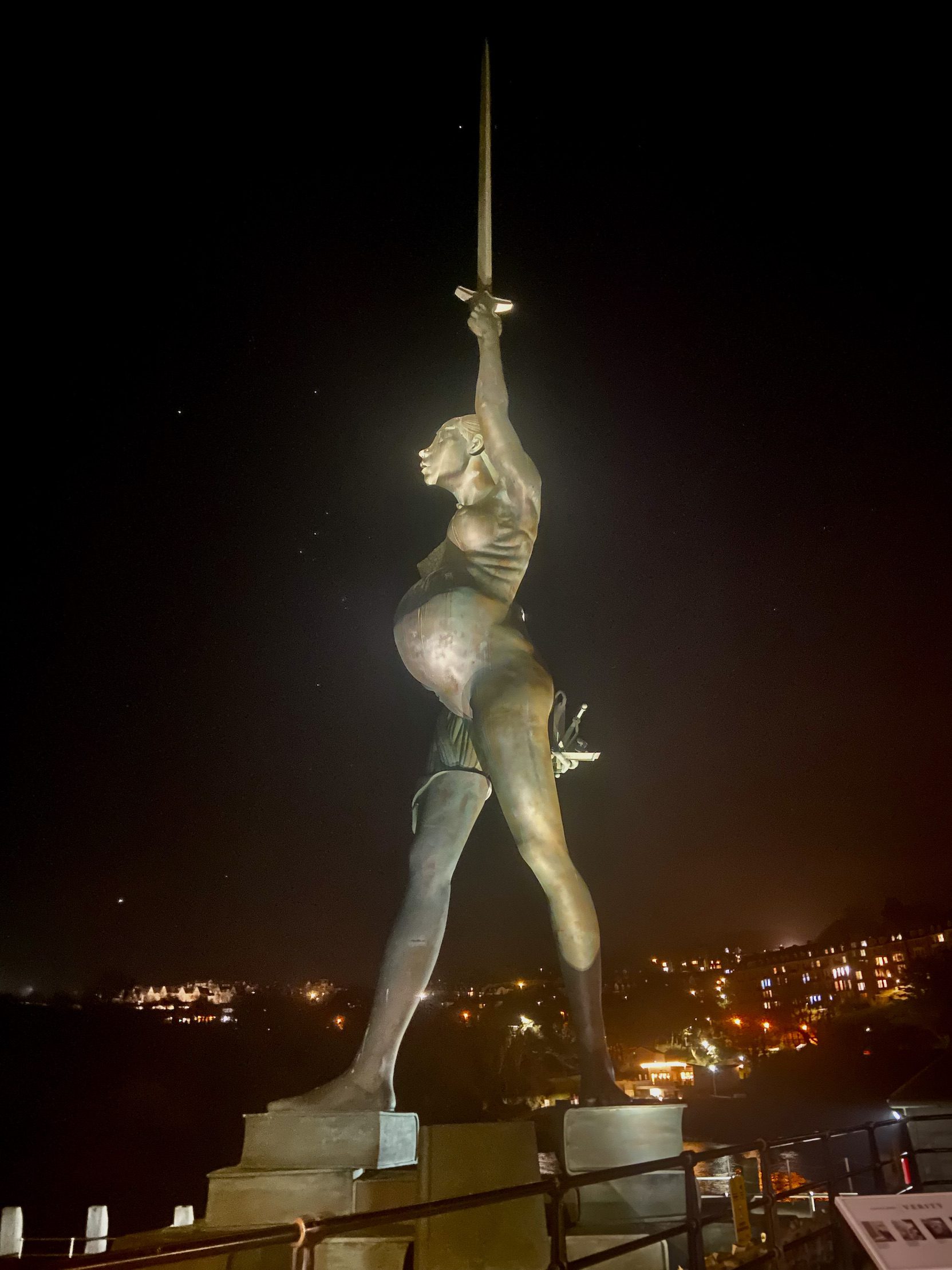
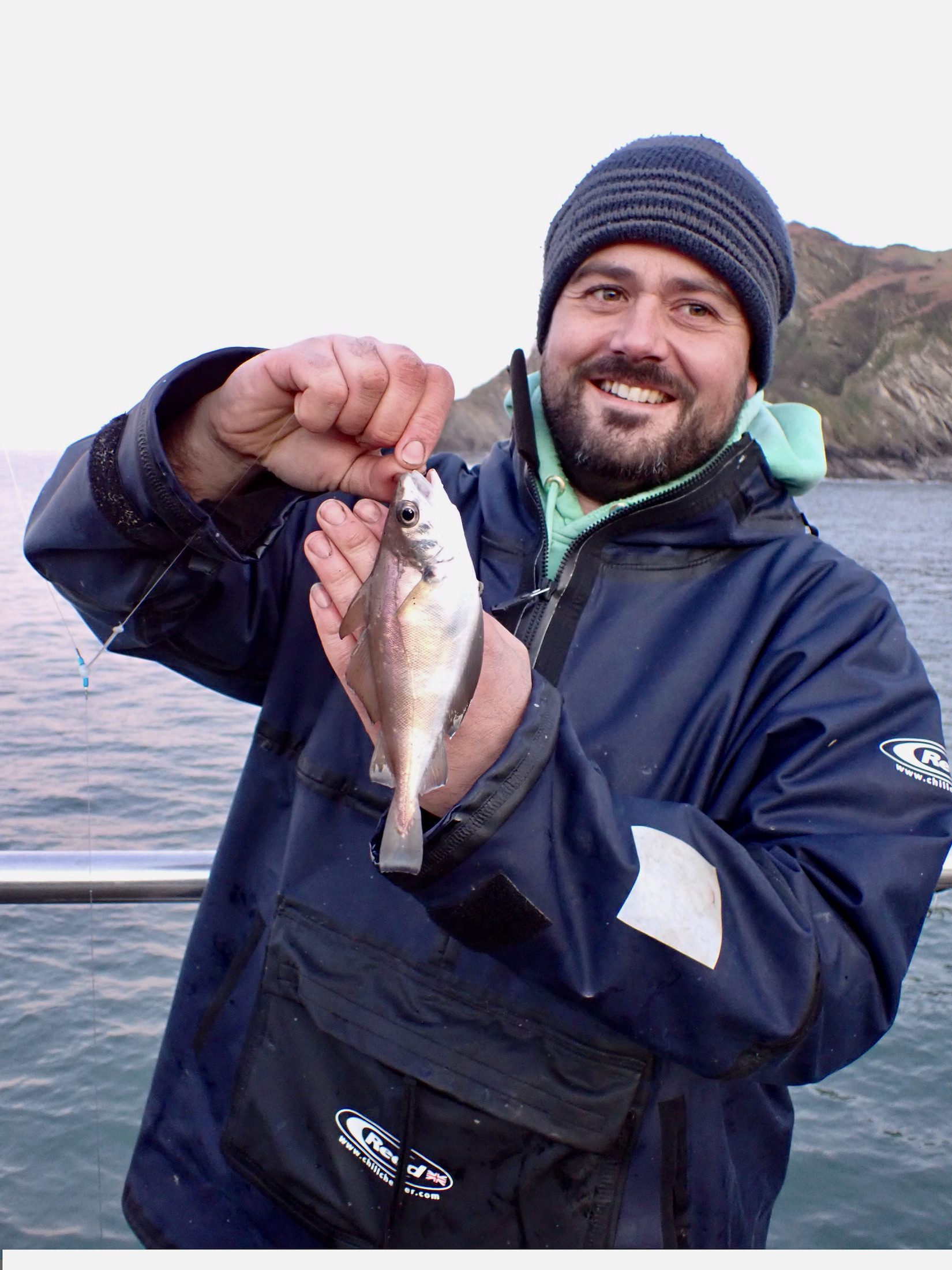
Combe Martin SAC AGM and presentation night.
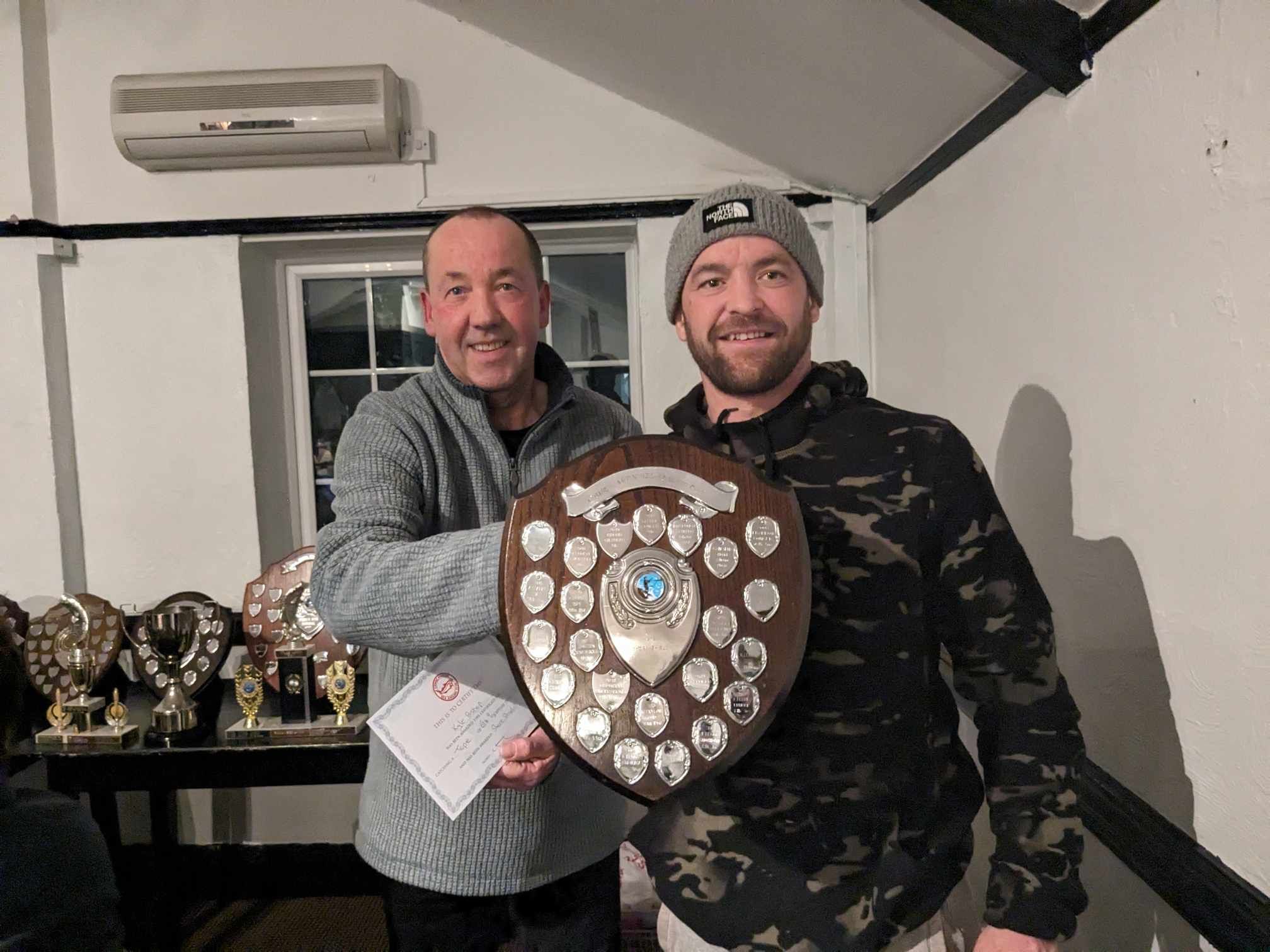
Combe Martin SAC held their AGM and presentation night at the White Lion Inn Braunton on Friday January 26th. The club had enjoyed a successful year in 2023 with members registering a good number of specimen fish. The club are introducing a predator award next season for the member registering the best tope, conger, bull huss and spurdog specimen rating total. The winner will receive a megladon sharks tooth for 12 months from club member Daniel Welch.
Award winner for 2023 were as follows :-
2023 Trophy Winners
Cod Trophy Mark Jones. 6lb 12oz
Bass Trophy David Brooke – 12lb 6oz
Mullet Cup Kyle Bishop = Thin Lipped grey mullet 5lb 3oz 129%
Conger Cup Shane Pavio Hook Way – 23lb 7oz
Flatfish Cup Daniel Welch. Flounder 1lb 9oz
Shore Shield Kyle Bishop tope 61lb 9oz 205%
Medway Cup Mark Jones Porbeagle Shark 151% calculated by formula
Ray Shield Jamie ~Steward small eyed ray – 12lb 13oz
Wrasse Trophy Daniel Welch 5lb
Burgess Trophy Charlie Stanway – ballan wrasse 4lb 15.5oz 110%
Scouse Shield Wayne Thomas – rockling 15oz
D Kyte Award Wayne Thomas 4 mullet total 312%
Out Of Limits Ollie Passmore – ballan wrasse 5lb 6oz
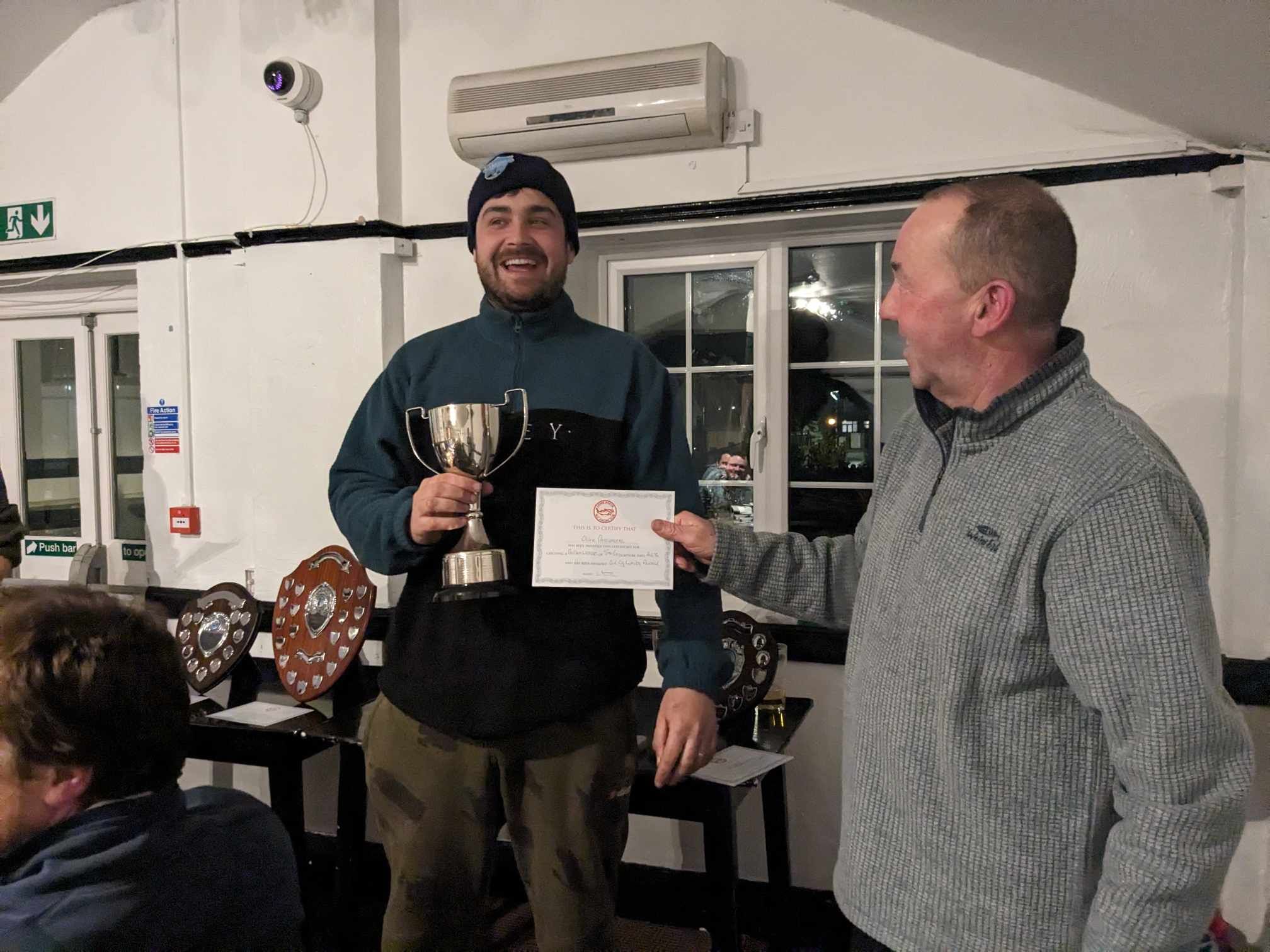
Thornback Cup – Mark Jones 13lb 10oz
Specimen League – Kyle Bishop
Bass 10lb 6oz 129.688%
Bull Huss 15lb 5oz. 153.125%
Spurdog 13lb 3oz. 132%
Thin Lipped grey mullet. 5lb 3oz. 129.688%
Tope 61lb 9oz. 205.208%
Ballan wrasse 4lb 15oz. 109.722%
Total – 859.306%
|
|
||||||||||||||||||||||||||||||||||
Runner up Jamie Steward
|
||||||||||||||||||||||||||||||||||
Top four boat specimens
Mark Jones –
| bass | 9lb 1oz | 113.281 | B |
| porbeagle | 265lb | 151.43 | B |
| tope | 36lb | 90 | B |
| pollock | 7lb 4oz | 72.5 | B |
| 427.211 |
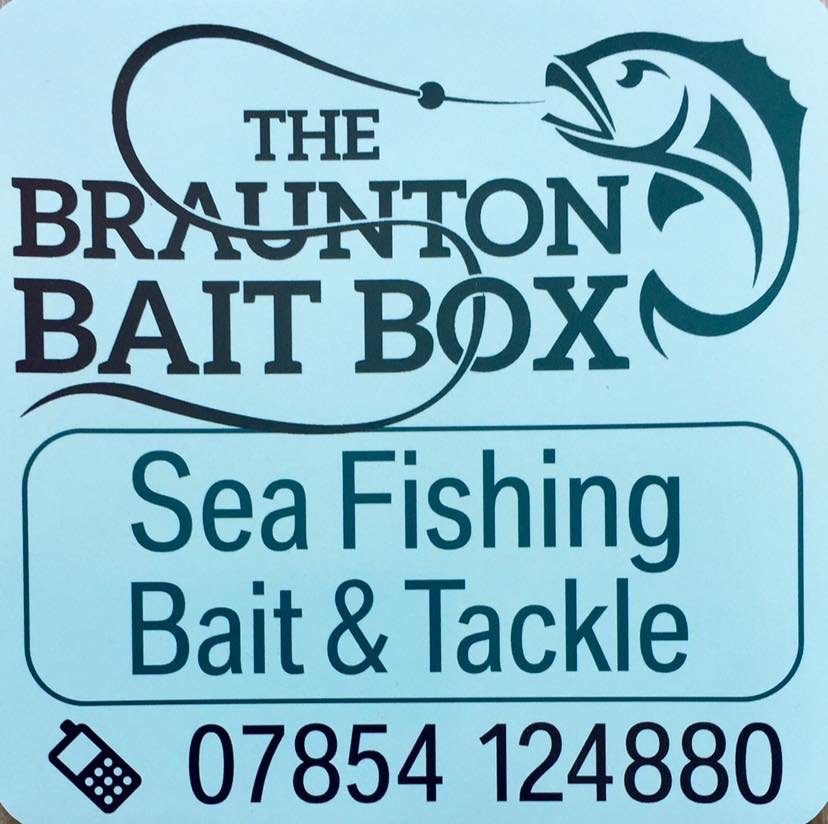
Club Records
Kyle Bishop – Skate 13lb 8oz
Shaun Quartly – blue-mouth 6oz
Kyle Bishop – bull huss 15lb 5oz
Daniel Welch – bonito 3lb 15oz (Boat)
Shane Pavio Hook Way – Thresher Shark – 300lb ( Estimated)
Fish of the season –
Winter 22/23 David Brooke – bull huss 15lb 2oz 151%
Spring 23 Jamie Steward – Gilt head bream 4lb 4oz 141%
Summer 23 Kyle Bishop. Tope 61lb 9oz. 205%
Autumn 223– David Brook. Bass 12lb 6oz 154.688%
Merit Award – Kyle Bishop outstanding catches throughout the year.
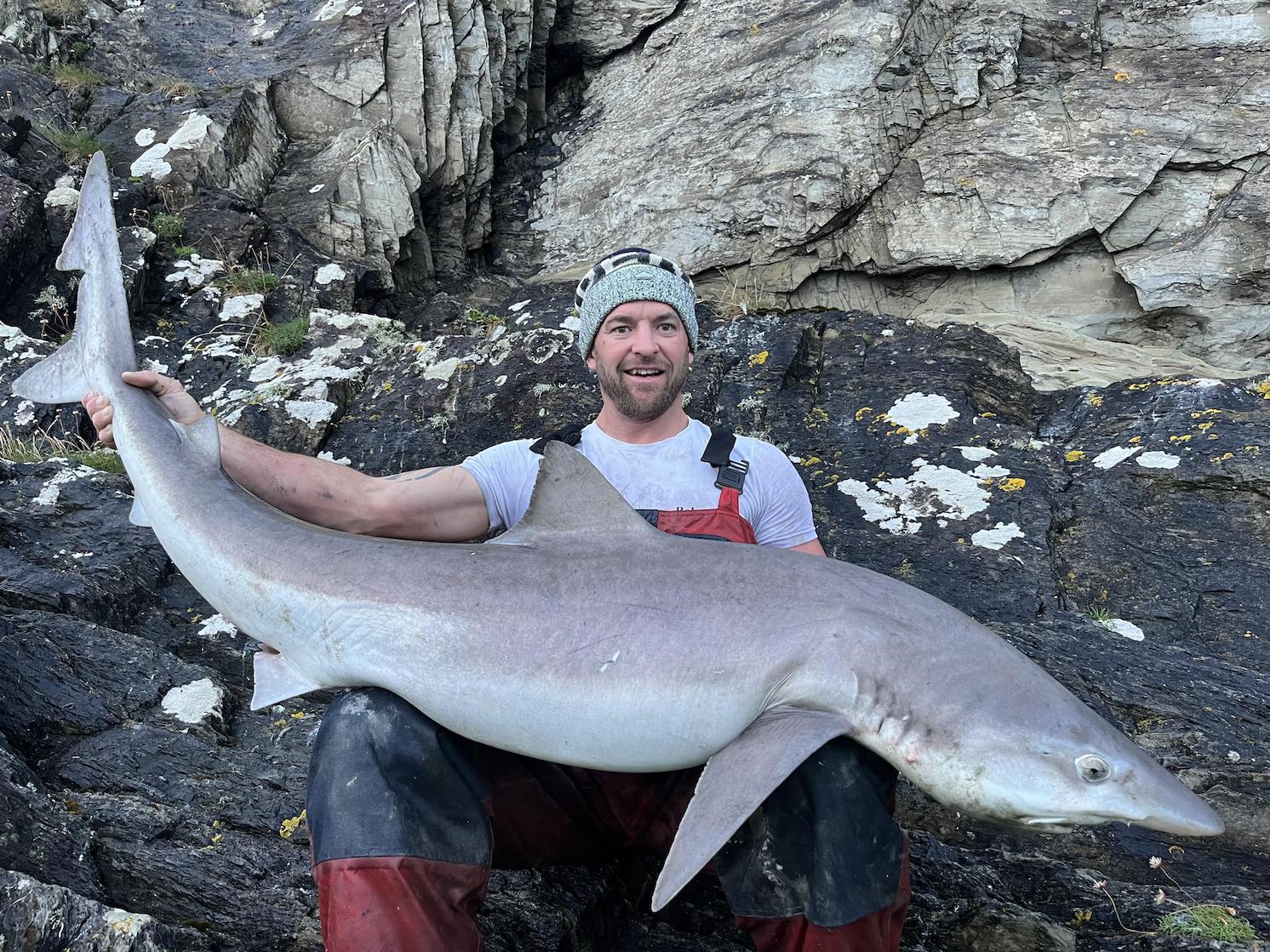
The club are also launching an Ilfracombe based species league that will be run in conjunction with keen Ilfracombe anglers
Species competition Format
- Most species wins
- All fish to photographed with captor and proof of location
- Boundaries from lime kiln to Cheyne beach
- CMSAC Club members
- Comp starts 1st of Feb 2024 until December 31st 2024
Subsequent years will be as per calendar year
- Entry for CMSAC members is free as part of membership
- Fishing to club rules – 2 rods, four hooks
9 . Prizes upfront
1st, 2nd , 3rd
Season Ticket for aquarium ( Family TBC)
£25.00 Voucher High Street Tackle
Voucher for local butchers ( TBC)
- Catch a Release encouraged
Entries to be sent to Fish Recorder Wayne Thomas or Toby Bassett.
Photos required clearly showing fish, captor and location.
League will be kept updated by Fish Recorder and in addition to individual entries a tally will kept as a club tally as a collective team effort.
Will try and arrange a few pop up species days throughout the year to encourage social interaction with members.

Rare Shore Caught skate sets new club record

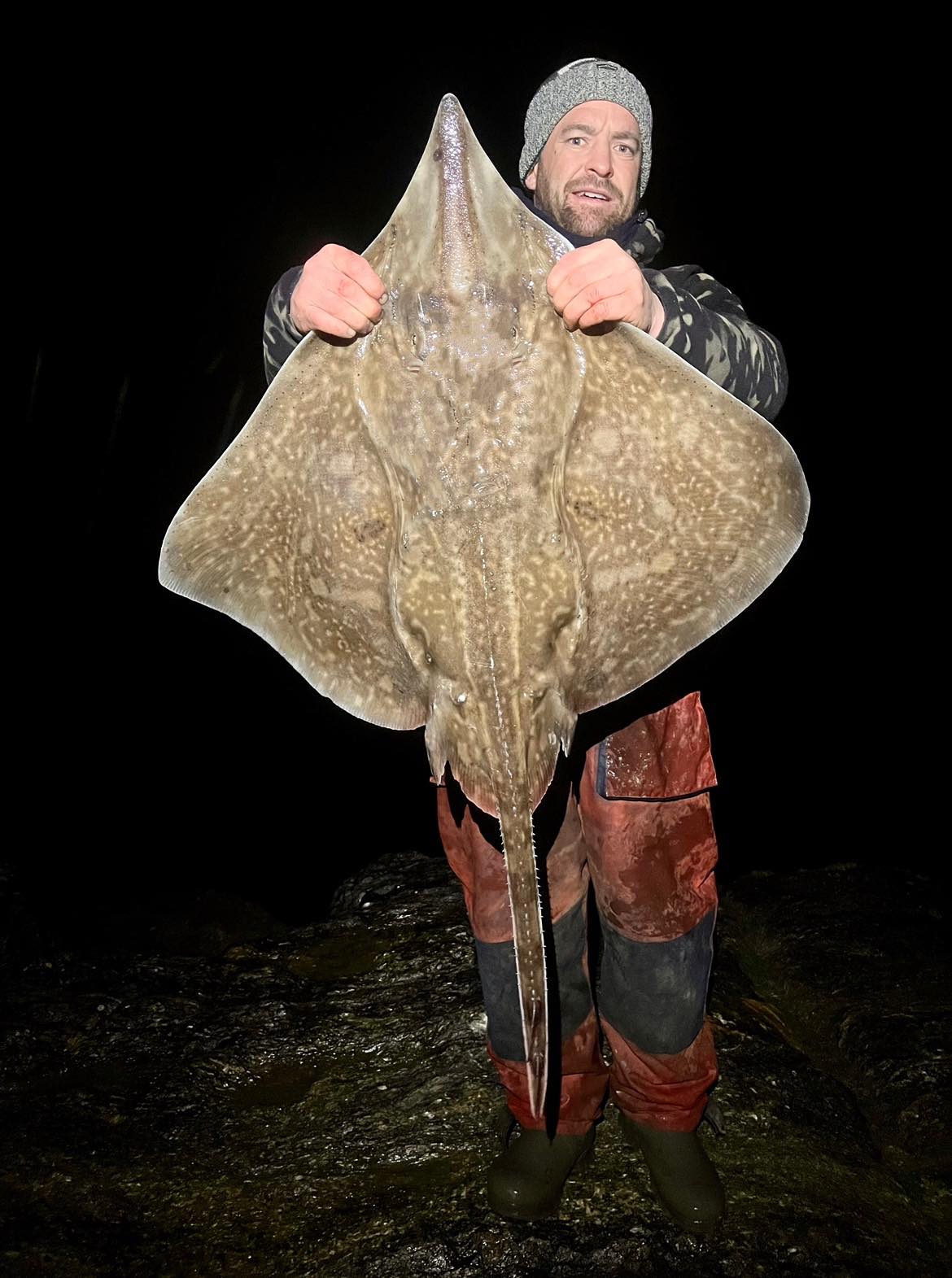
Combe Martin SAC member Kyle Bishop set a new club record when he caught a rare blue skate from the North Devon shoreline. The fish weighing 13lb 8oz beats the existing club record of 8lb 3oz caught in 2020 by Jamie Steward. Skate are a very rare catch from North Devon waters. These fish can grow to well over 200lb and were once common in the Bristol Channel with fish recorded from numerous North Devon ports in the Victorian era.
Kyle has also added specimen tope of 36lb 15oz and a spurdog of 10lb 5oz to his New Year tally following on from last season when he knotched up a very impressive list of specimen captures.
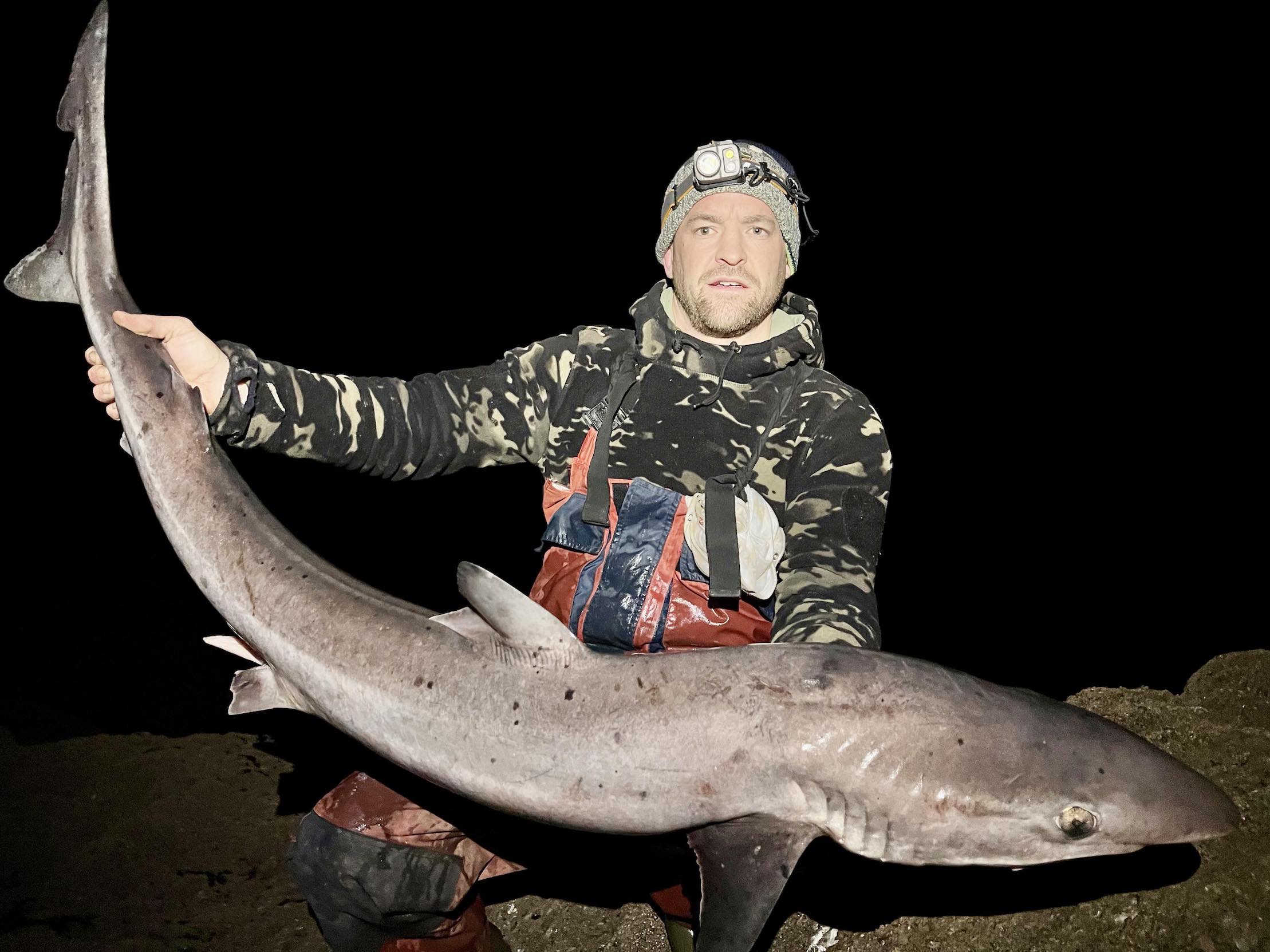
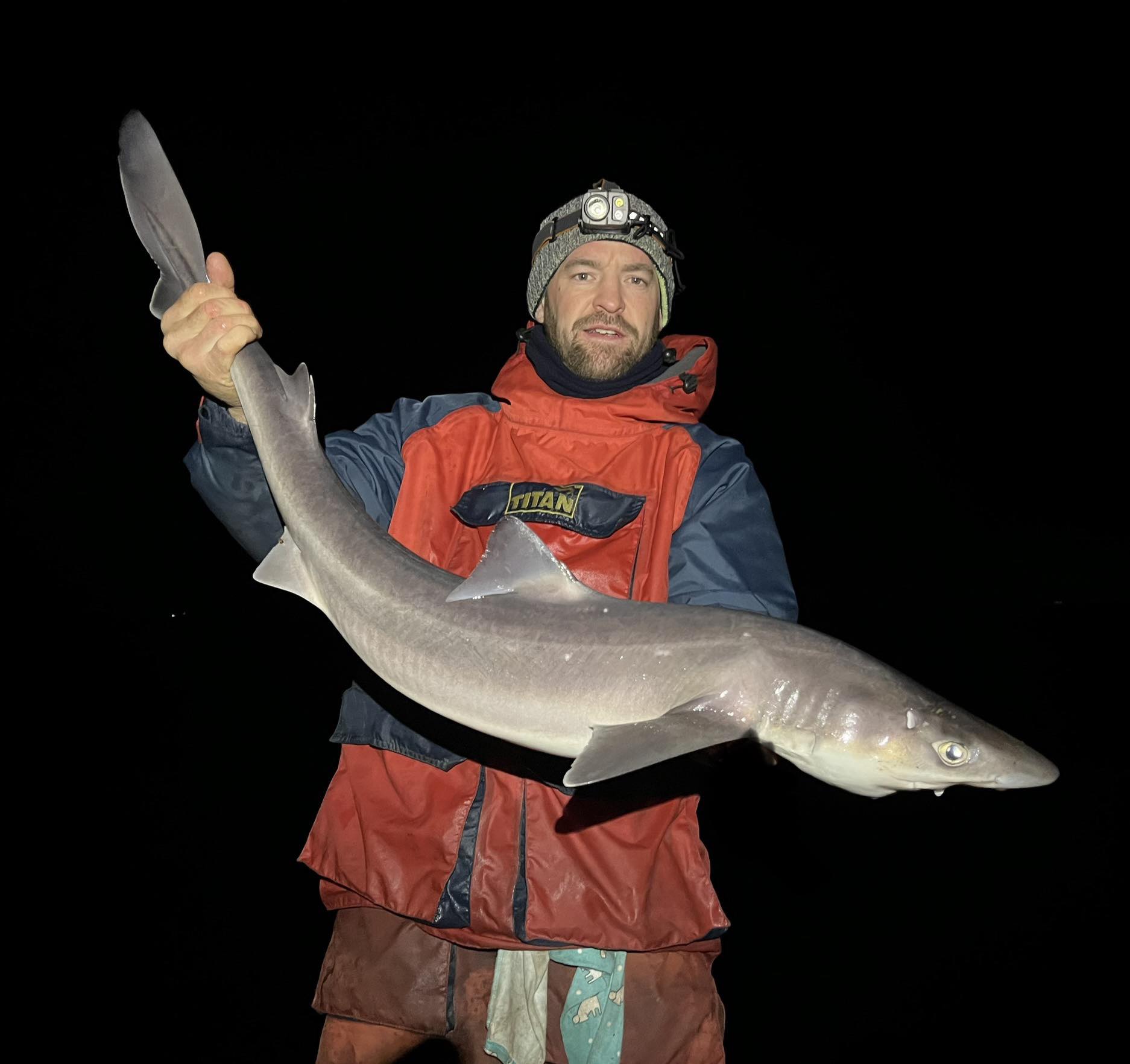
Wistlandpound Club – Enjoy Winter Sport at Bulldog
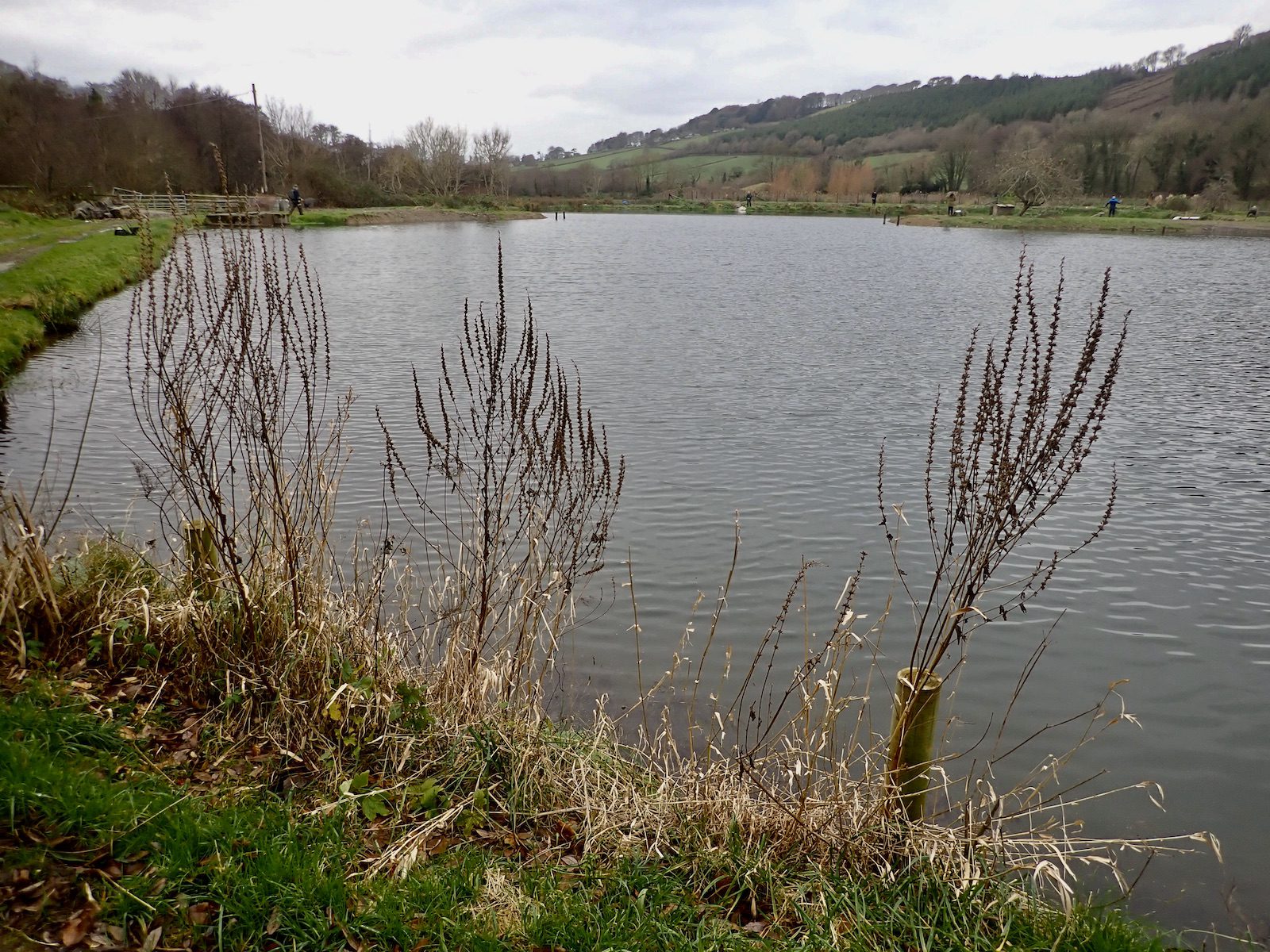
Wistlandpound Fly Fishing Club held their Christmas Competition at Bulldog Trout Fishery with the club’s entire membership of eight competing.
The grey overcast mild conditions seemed ideal for a good day’s winter sport as members spread out around the lake to cast out into the cool clear water.
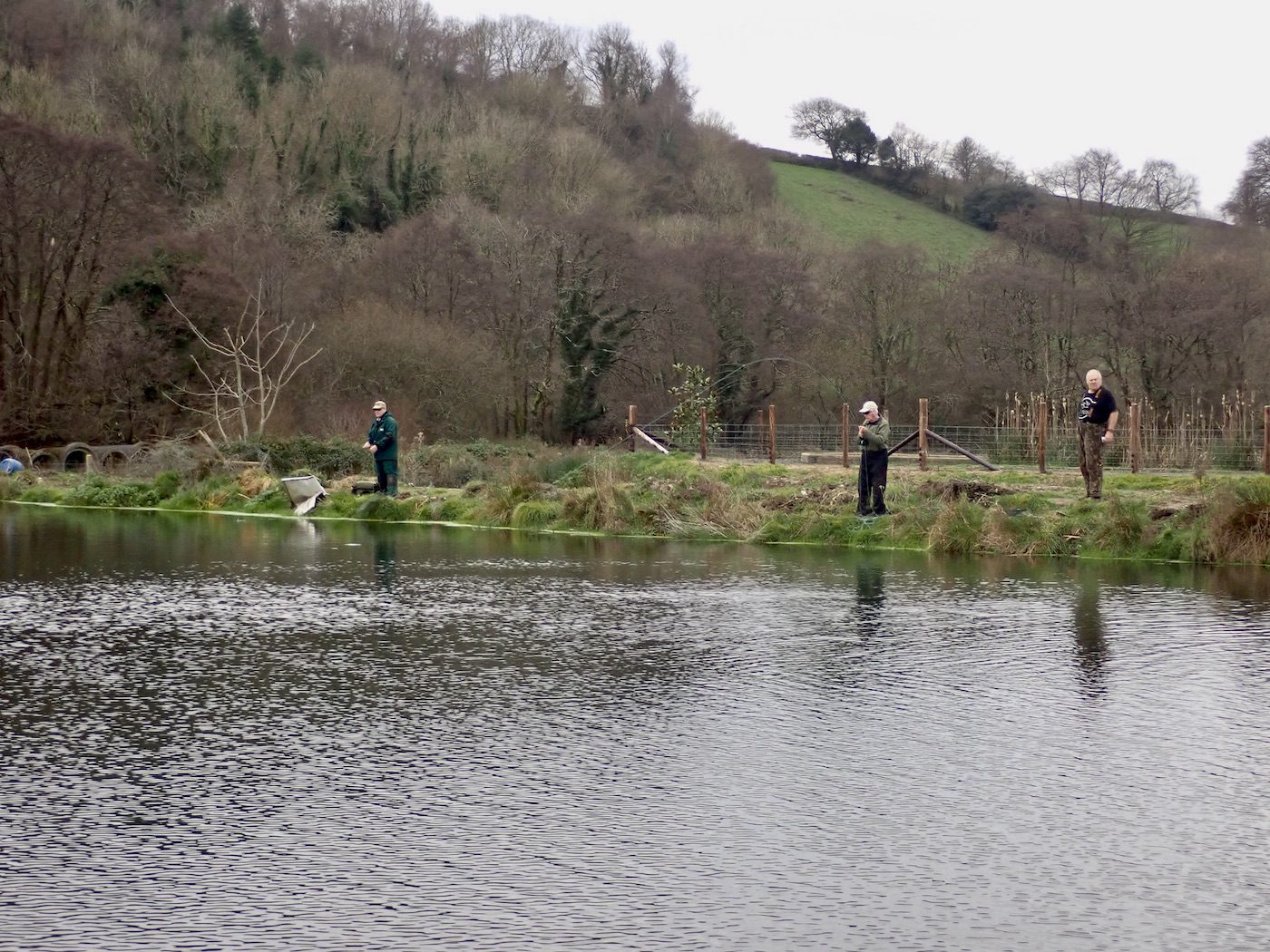
I put out a line on the water near the inlet to the lake were I have enjoyed success on previous visits. On the first two casts good sized rainbow could be seen following my fly to turn away at the last minute. I watched other anglers around the lake and noticed a couple of bent rods as is often the case at the start of the day.
After half an hour with no contact I decided upon a move to a fresh spot. I was using an olive damsel on the point and a small drab diawl bach on a dropper with an intermediate line. The move proved to be a wise one as the line soon tightened as a hard fighting rainbow seized the dropper. This was followed a few minutes later by another rainbow of close to 3lb. It seemed that I had either located the fish or they had come on the feed for within five minutes I added a 3lb 12oz rainbow to complete my three fish bag.
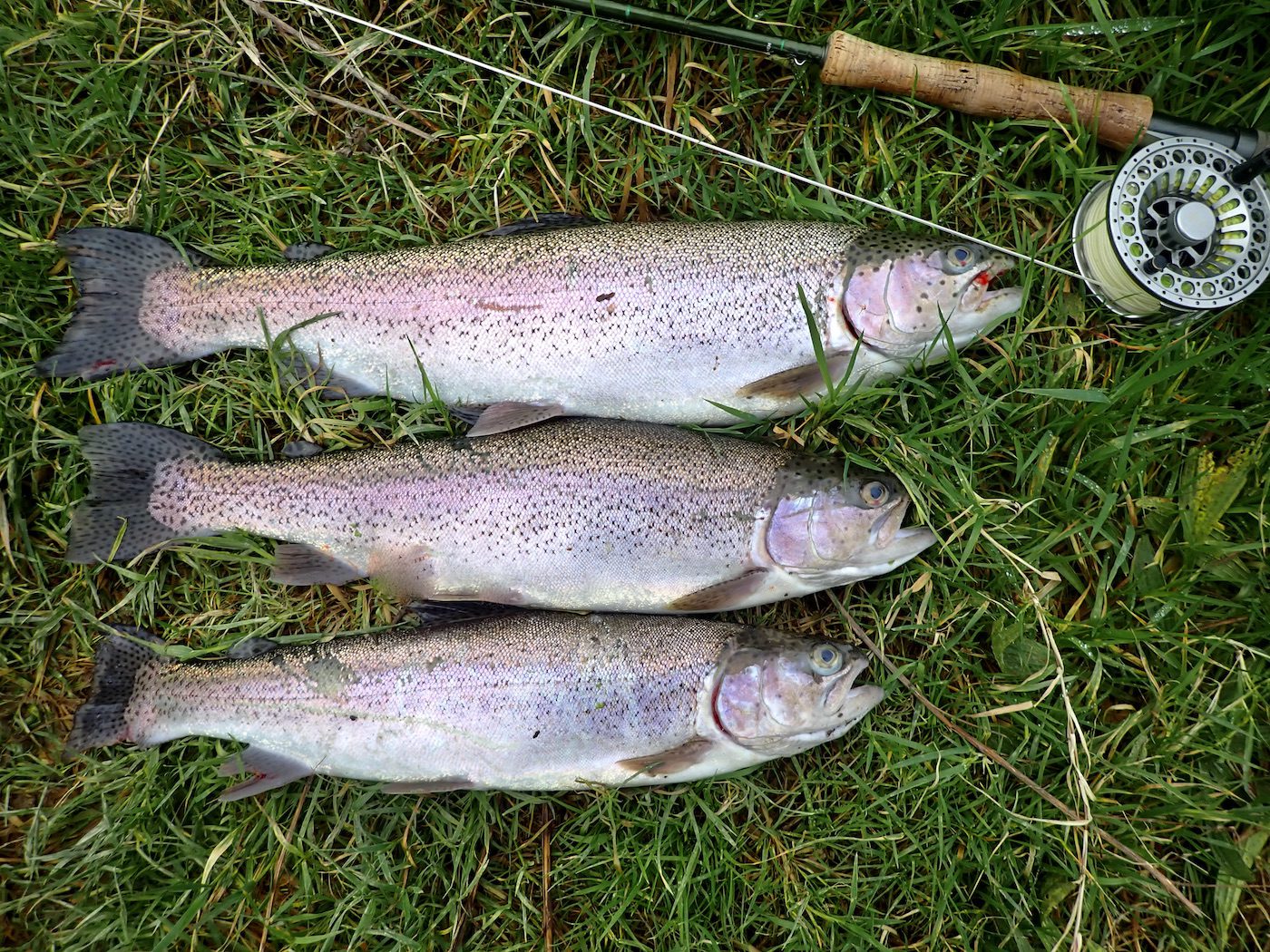
I spent the next half an hour chatting to fellow club members and capturing a few action shots as they too connected with the lakes hard fighting rainbows.
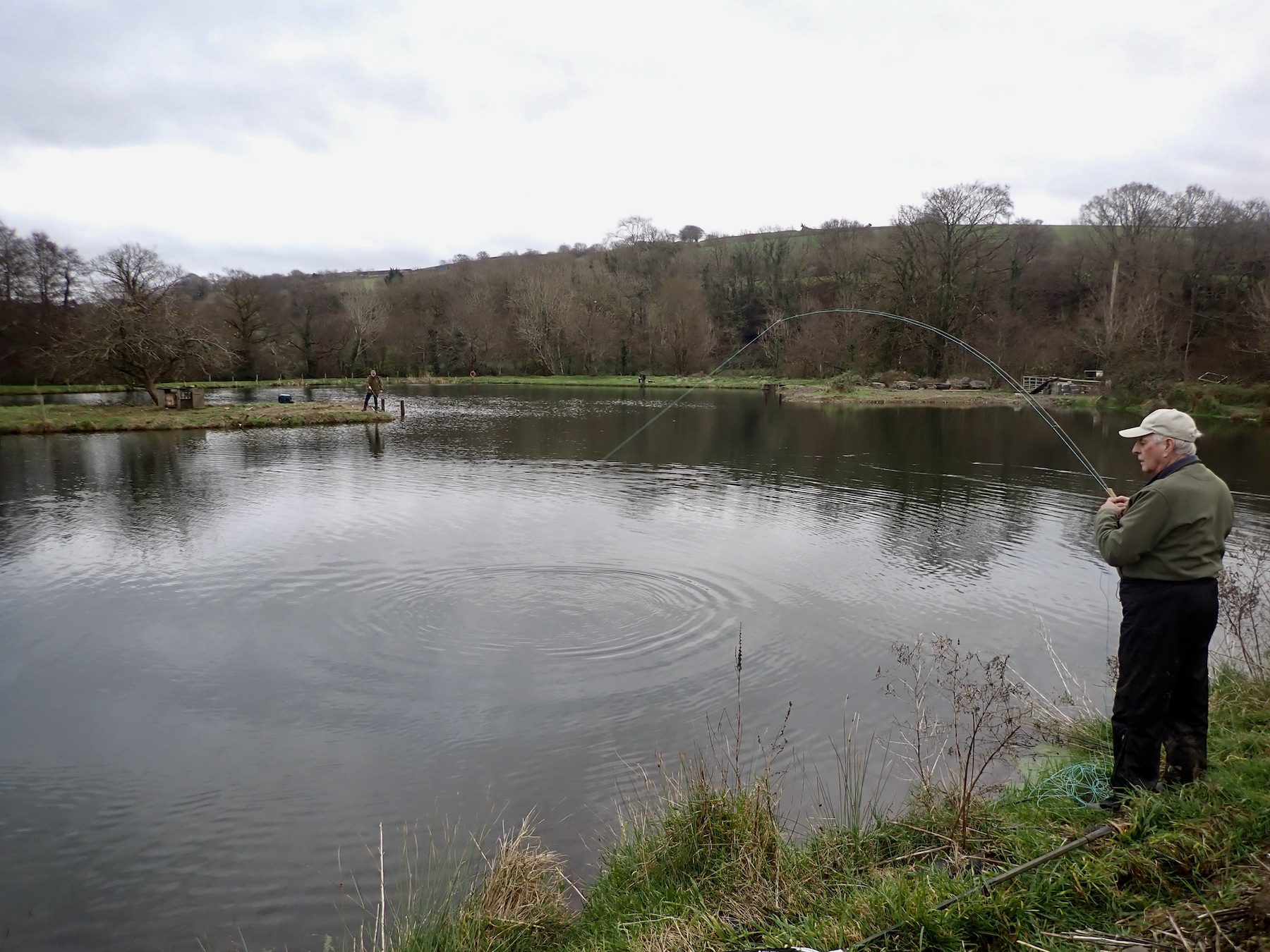
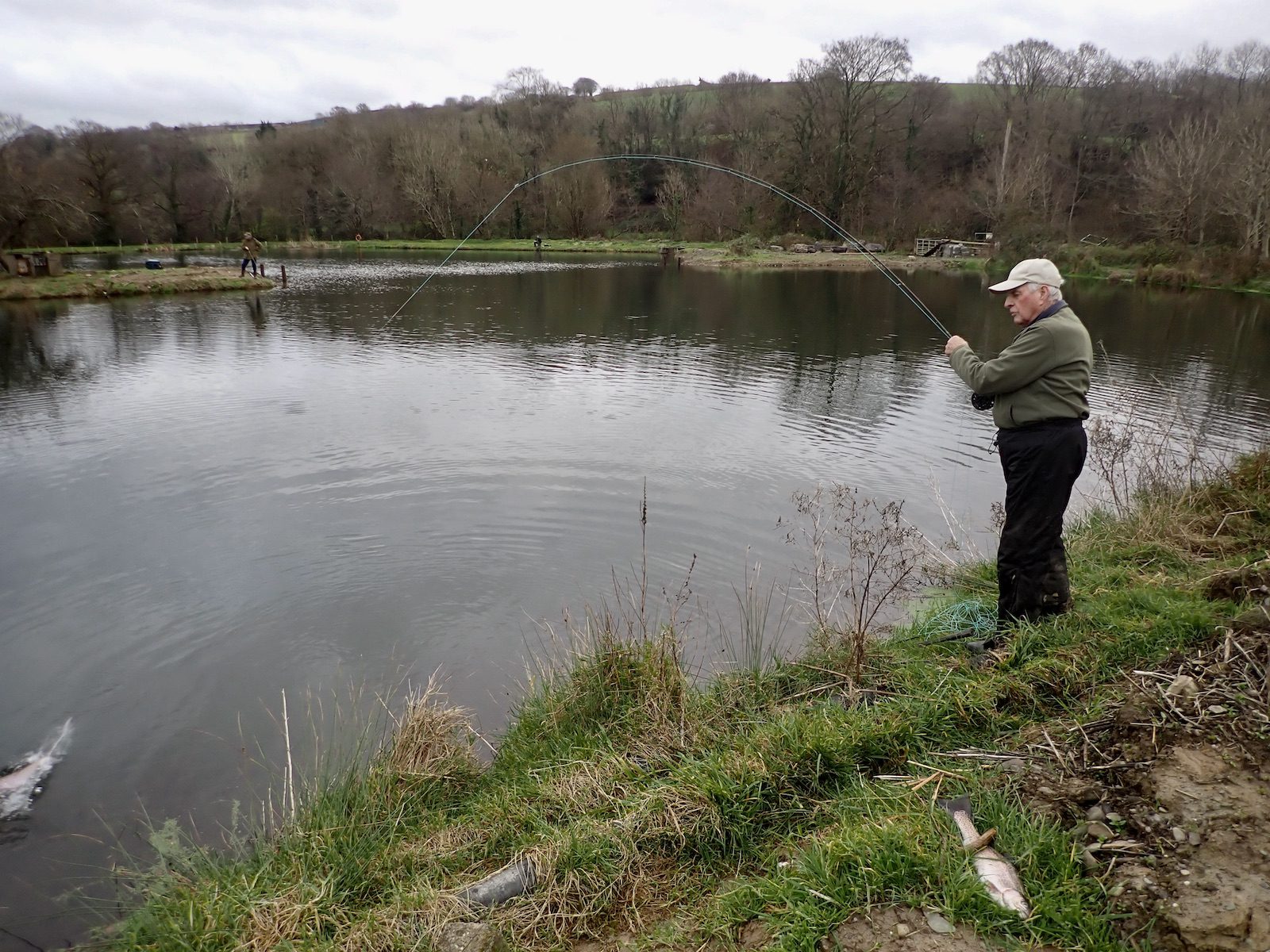
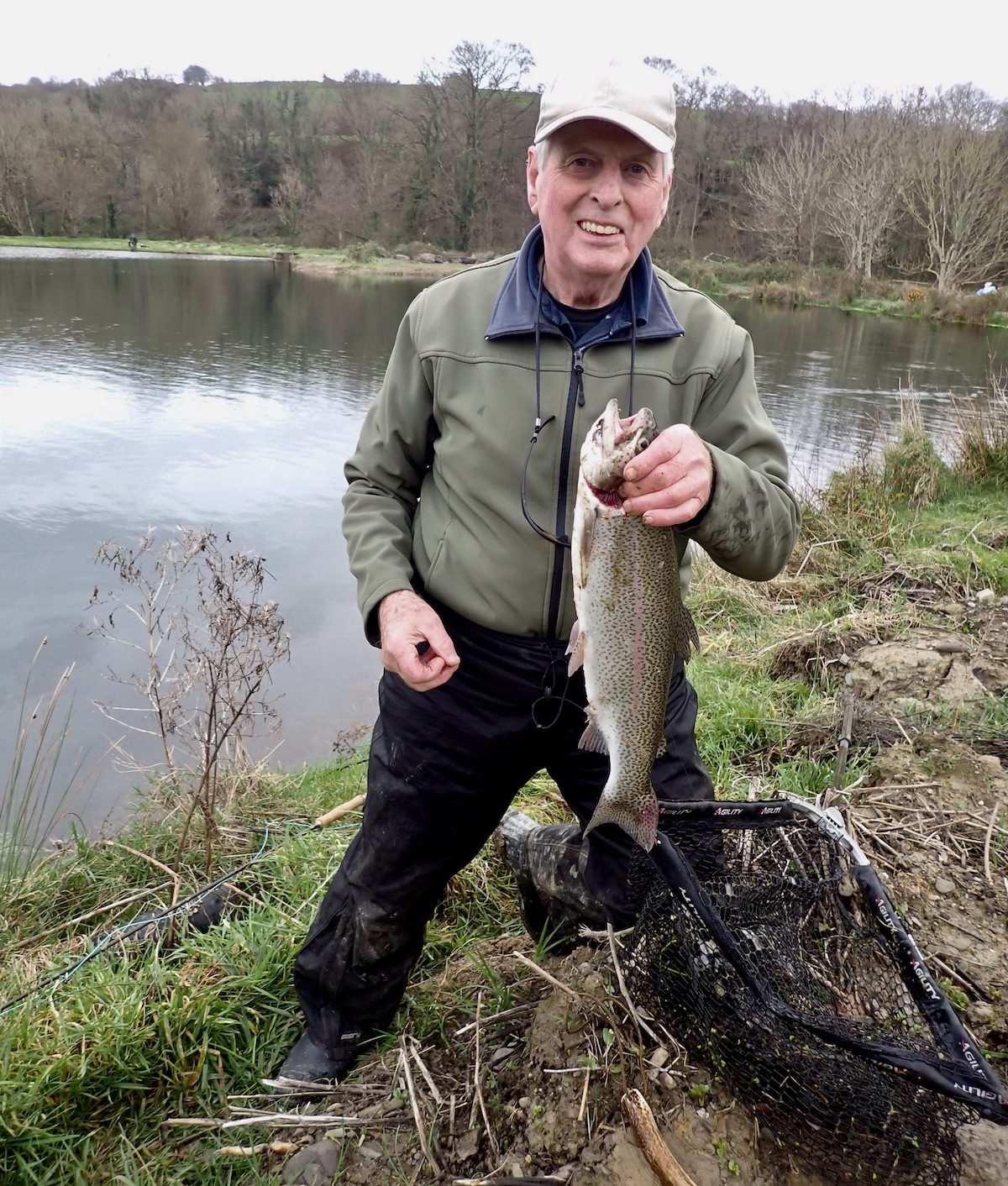
Fishery owner Nigel Early and his son Tom arrived at the water’s edge with delicious burgers and warming toddy, hot coffee and a tray of mince pies. Convivial chatter and Christmas cheer filled the grey winters day as we chatted of the club’s future and plans for 2024.
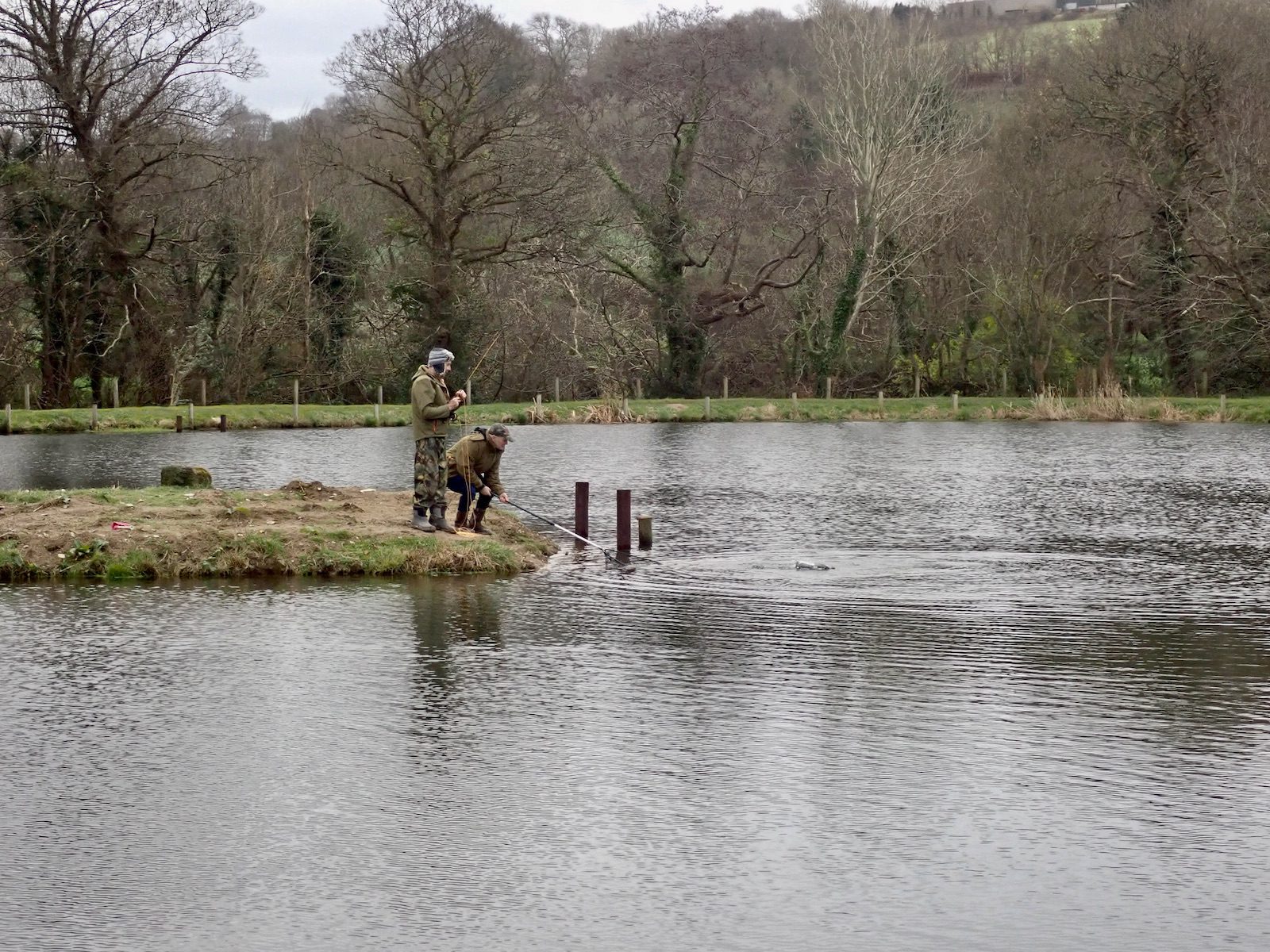
The enlarged trout lake has the capacity for a dozen or more anglers to fish in comfort. The clear waters offer exciting sport with rainbows presently stocked up to 8lb plus with some large browns to be introduced in the New Year.
I left the lake at lunch time with Christmas preparations pending at home. Most members had caught their three fish but a few had yet to finish.
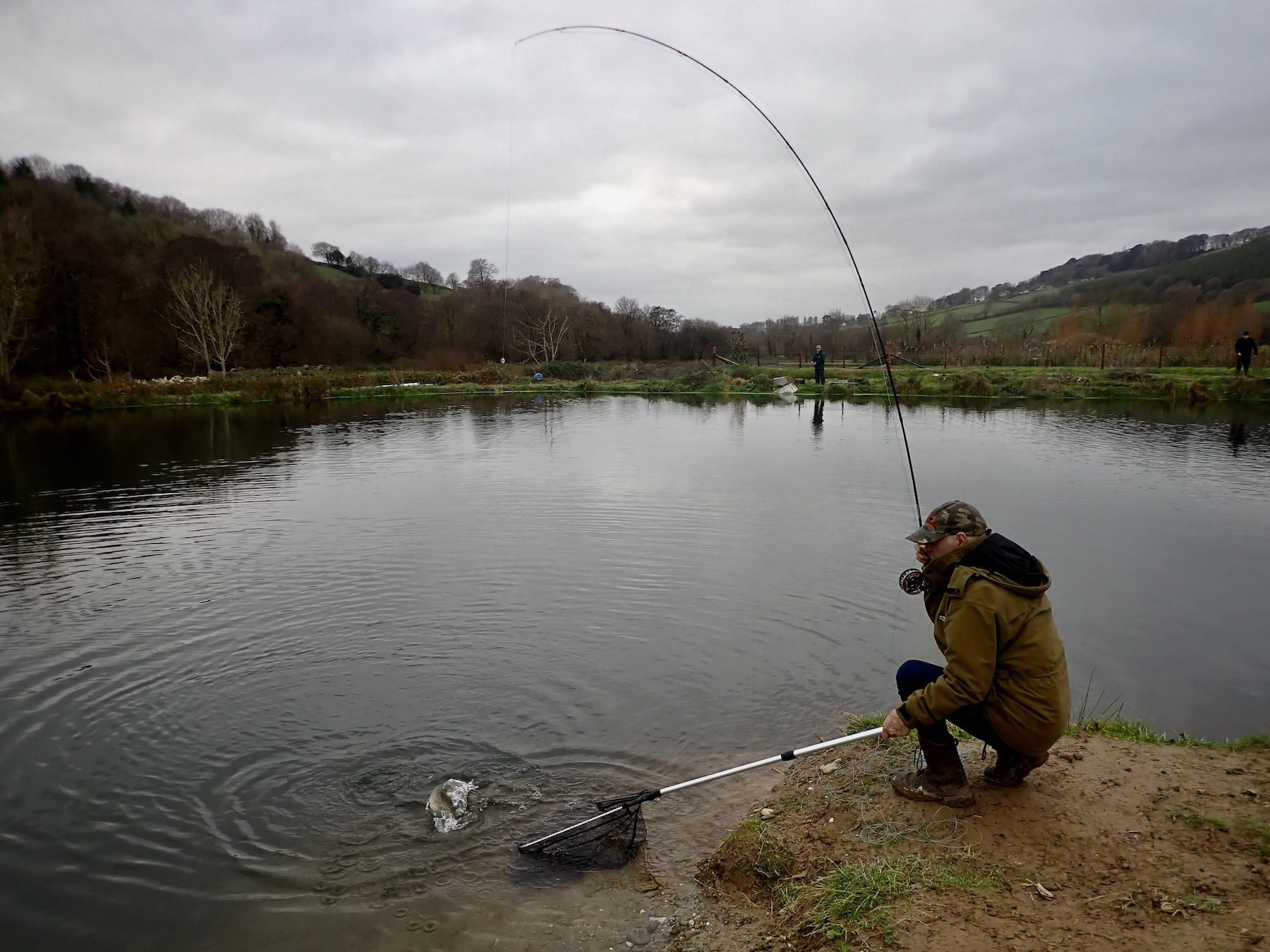
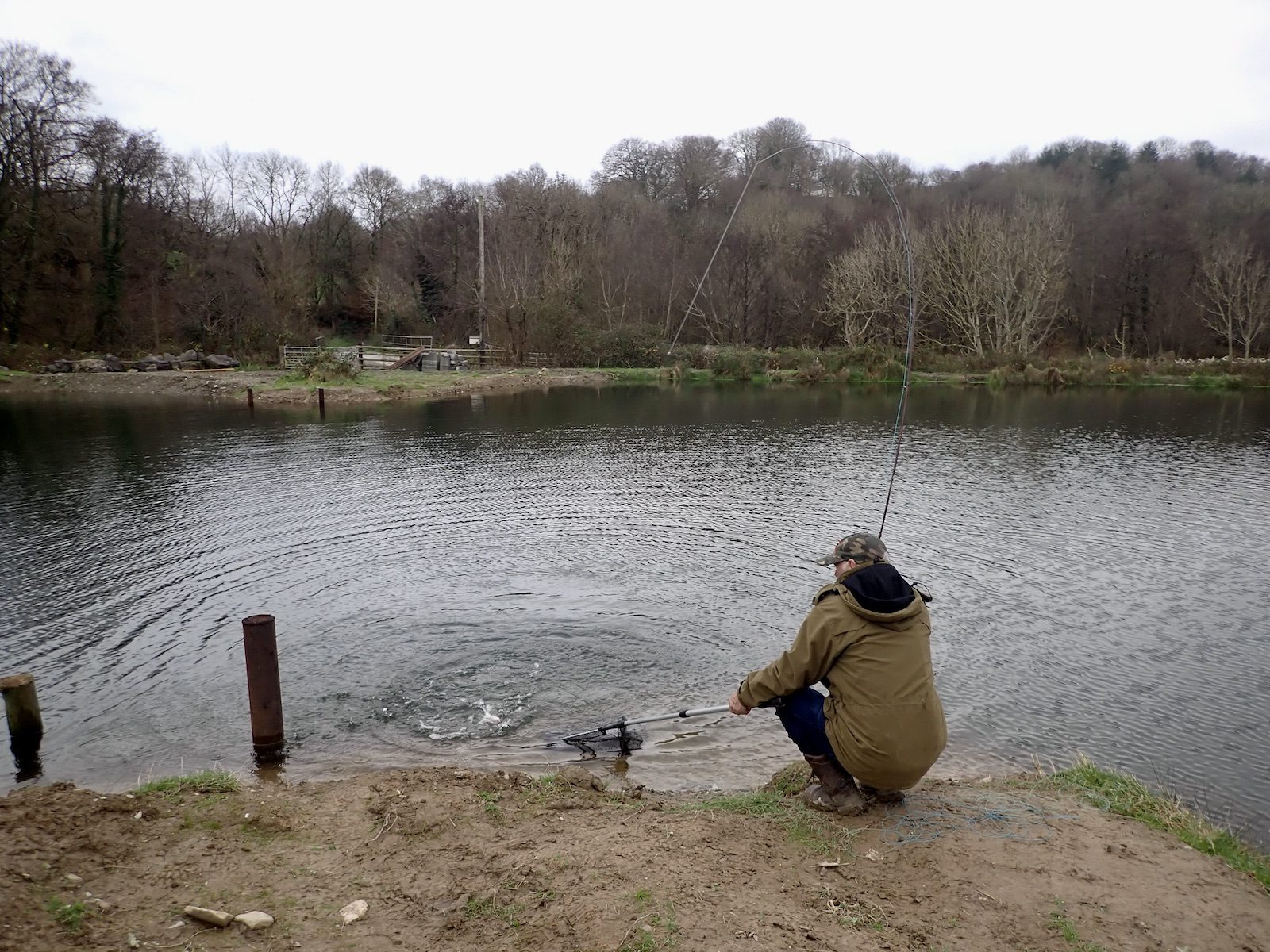
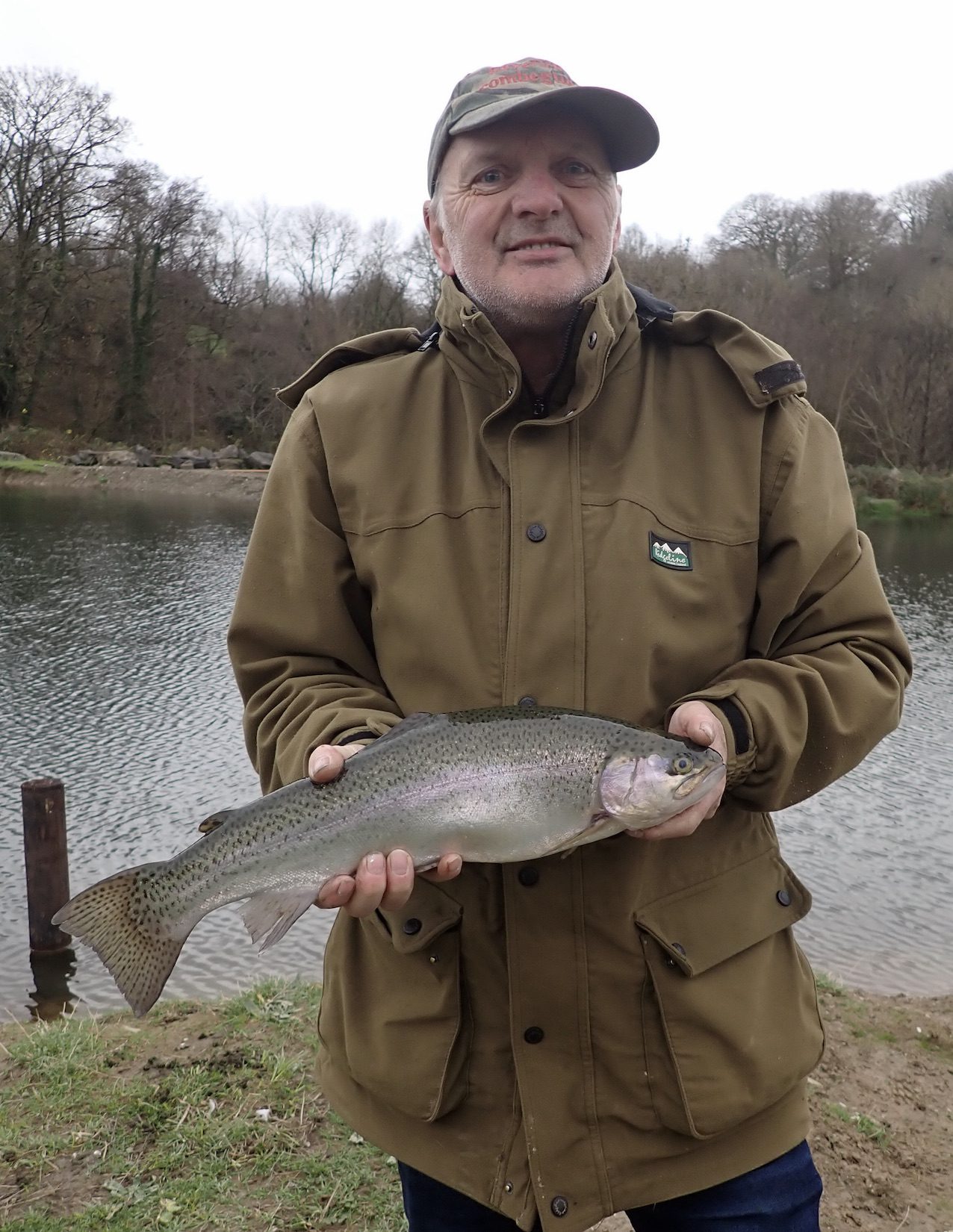

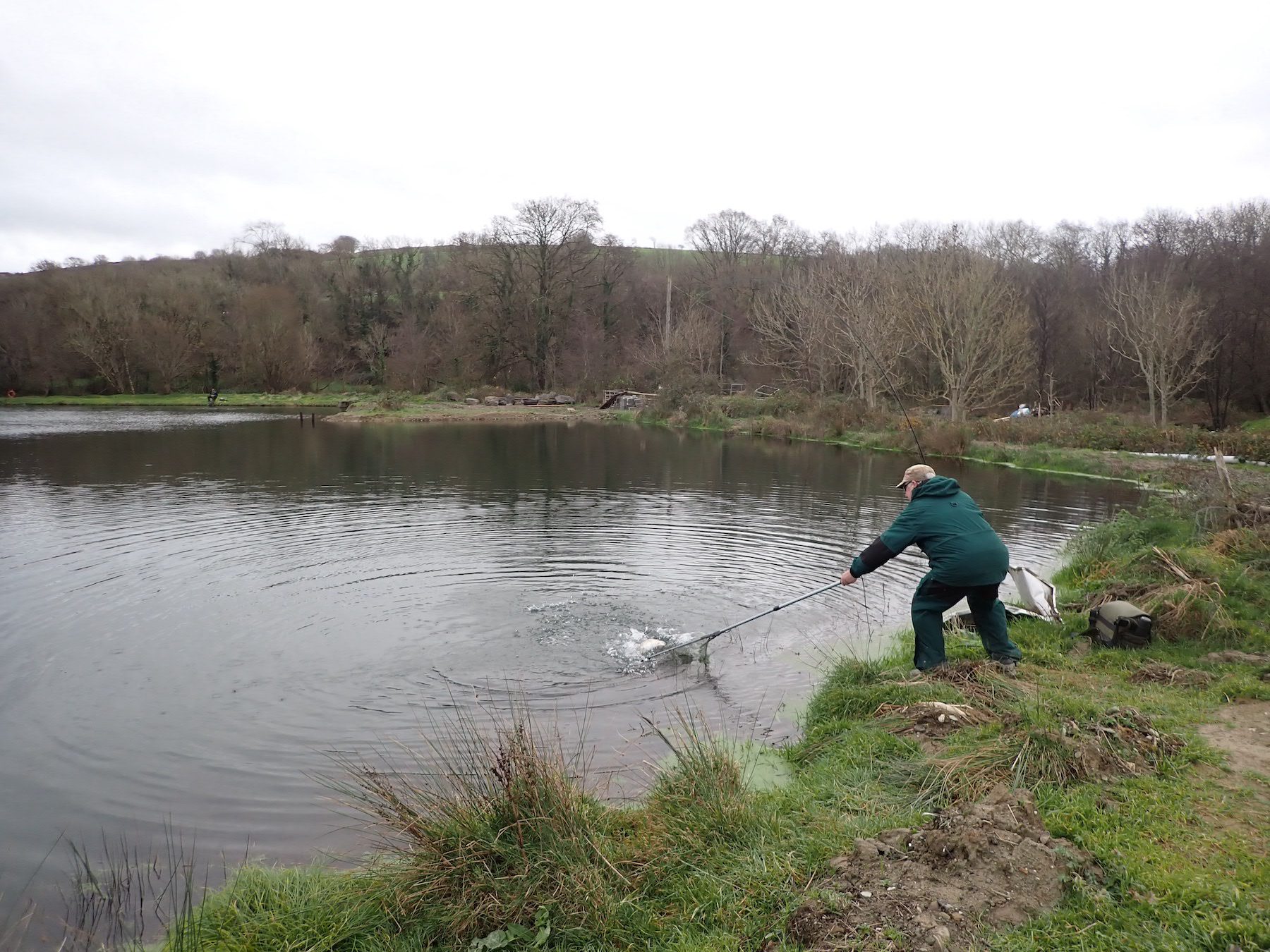
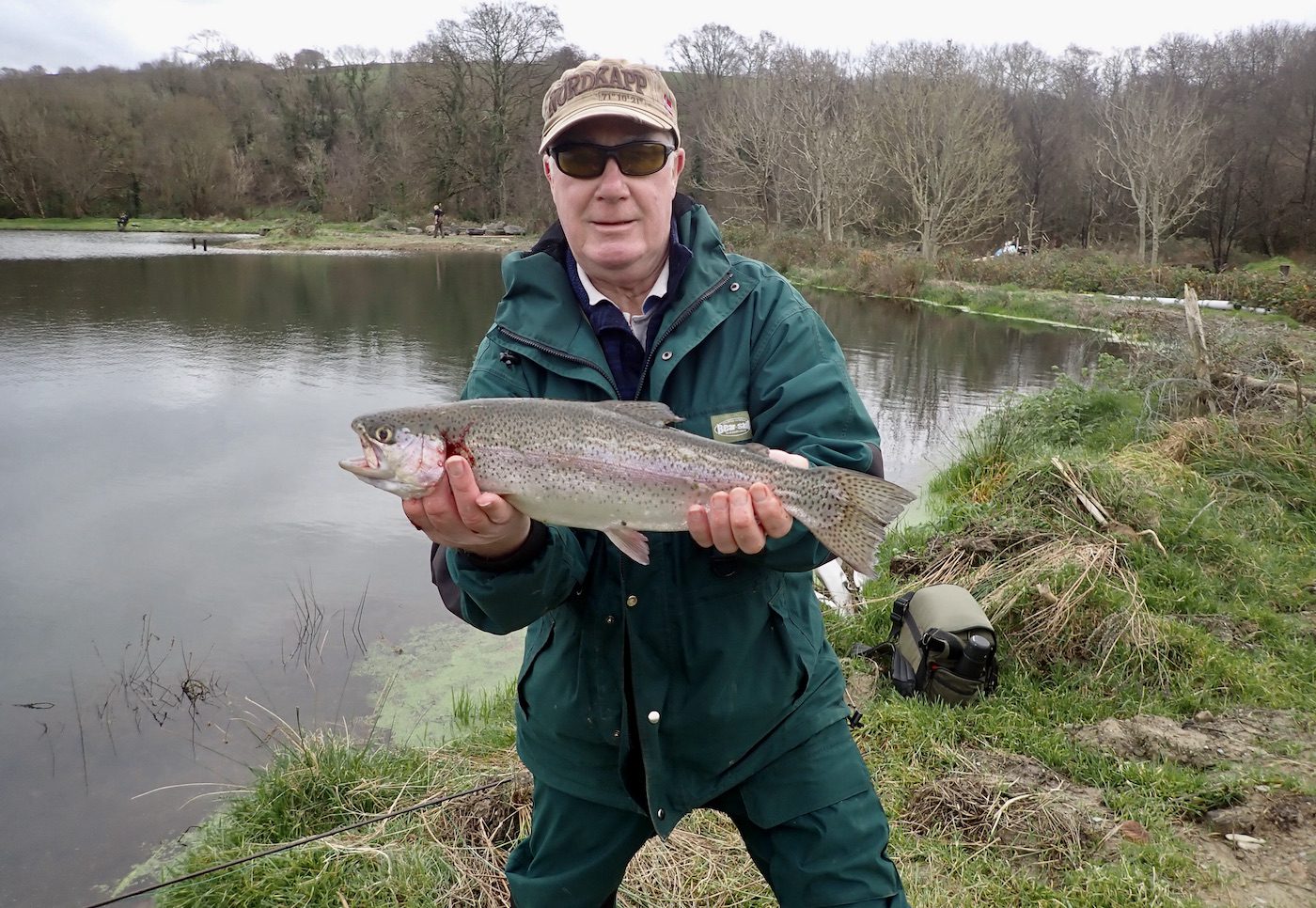
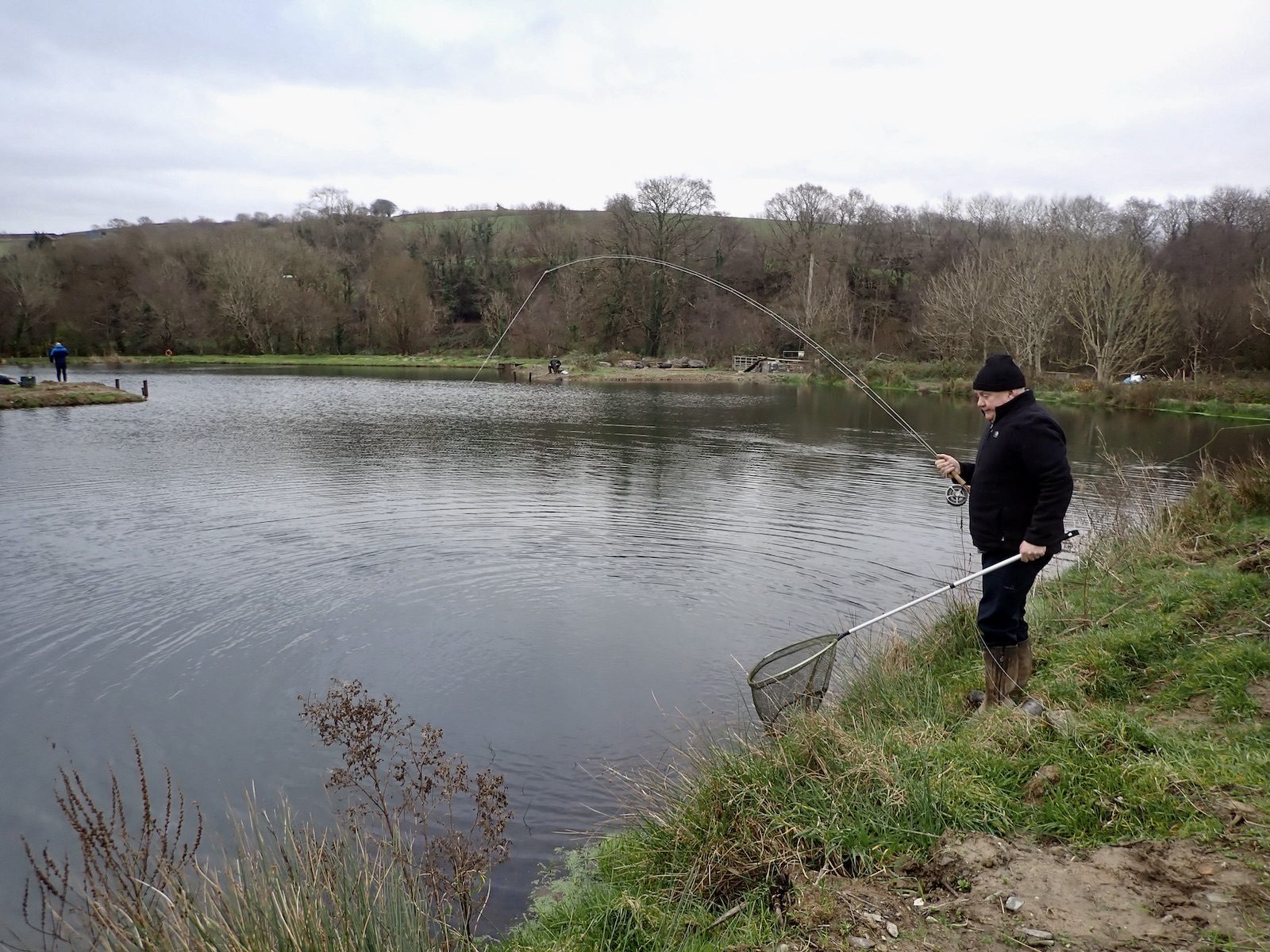
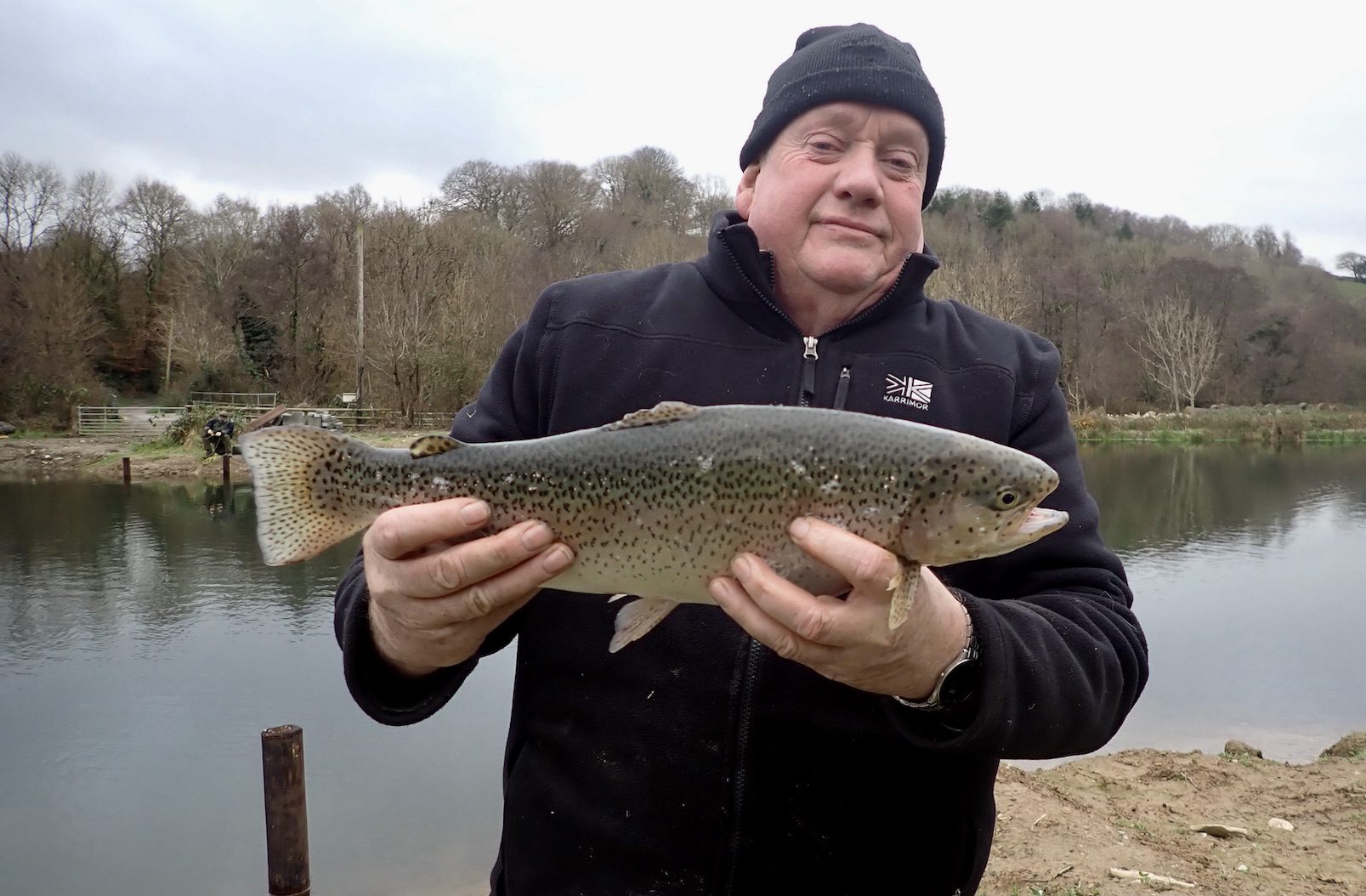
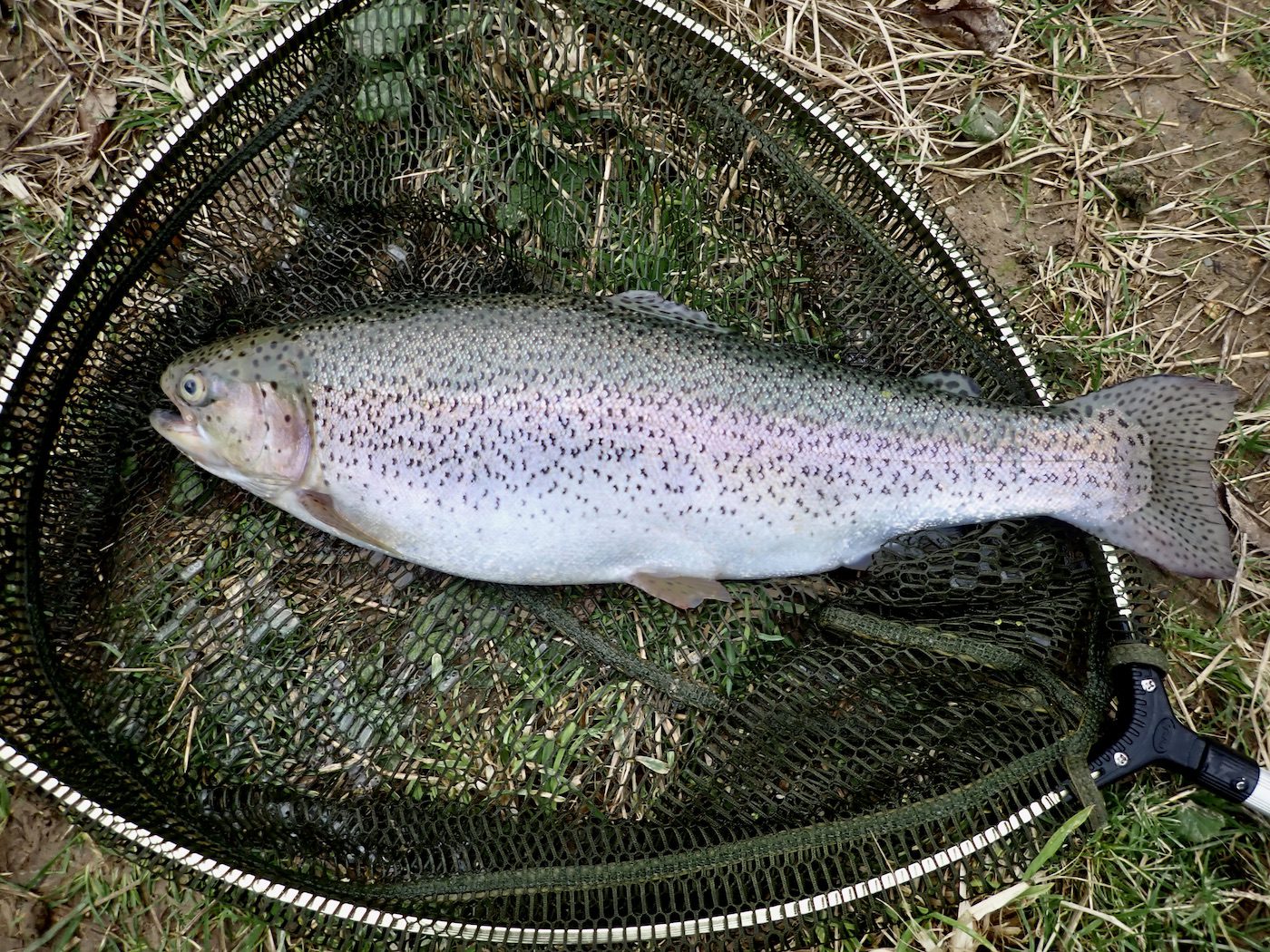
David Richards won with three trout for 10lb 5oz. Andre Muxworthy and Dave Mock were runners up with three fish for 9lb and myself fourth with three fish for 8lb 2oz. Colin Combe banked three for 7lb 14oz.
The Memorial Flounder Competition
..in memory of Teddy New Stephen Williams and Kevin Stanley Bridson.
Congratulation to Nick Braunton who helped to organise this brilliant competition that attracted a a large number of local anglers.
1st Nobby Jefferys 1lb 9ozs winning £250
2nd Dick Talbot 1lb 8ozs
3rd Paul Burslem 1lb 7.1/2ozs
4th Tony Gooch1lb 7.1/4oz
5th Johnny Weeks 1lb 6ozs
6th Matt Horsham 1lb 4.1/2oz
7th Mark Jordan 1lb 4.1/4oz
8th Graham Parsons 1lb 4ozs
9th Paul Simmons 1lb 3.1/2
10th James Mayhew and Matt cleverly 1lb 3 1/4oz
59 seniors fished
The result of the juniors was
1st place Barnaby Raymont 1lb 5ozs
2nd Bailey Phipps 1lb 4ozs
16 juniors fished in total 75 fished the event..Tony Gooch and Dick Talbot won the blind pairs with a total of 3lb 5ozs..Great day but with minus 5 degrees it took some fishing..
Every junior won a prize donated by Summerlands Tackle, Angler’s Heaven, Quay sports and Sakuma Fishing & Bullet Bait.
Over £800 of cash prizes paid out and £706 raised for the Pollyfield Bar Refurbishment.

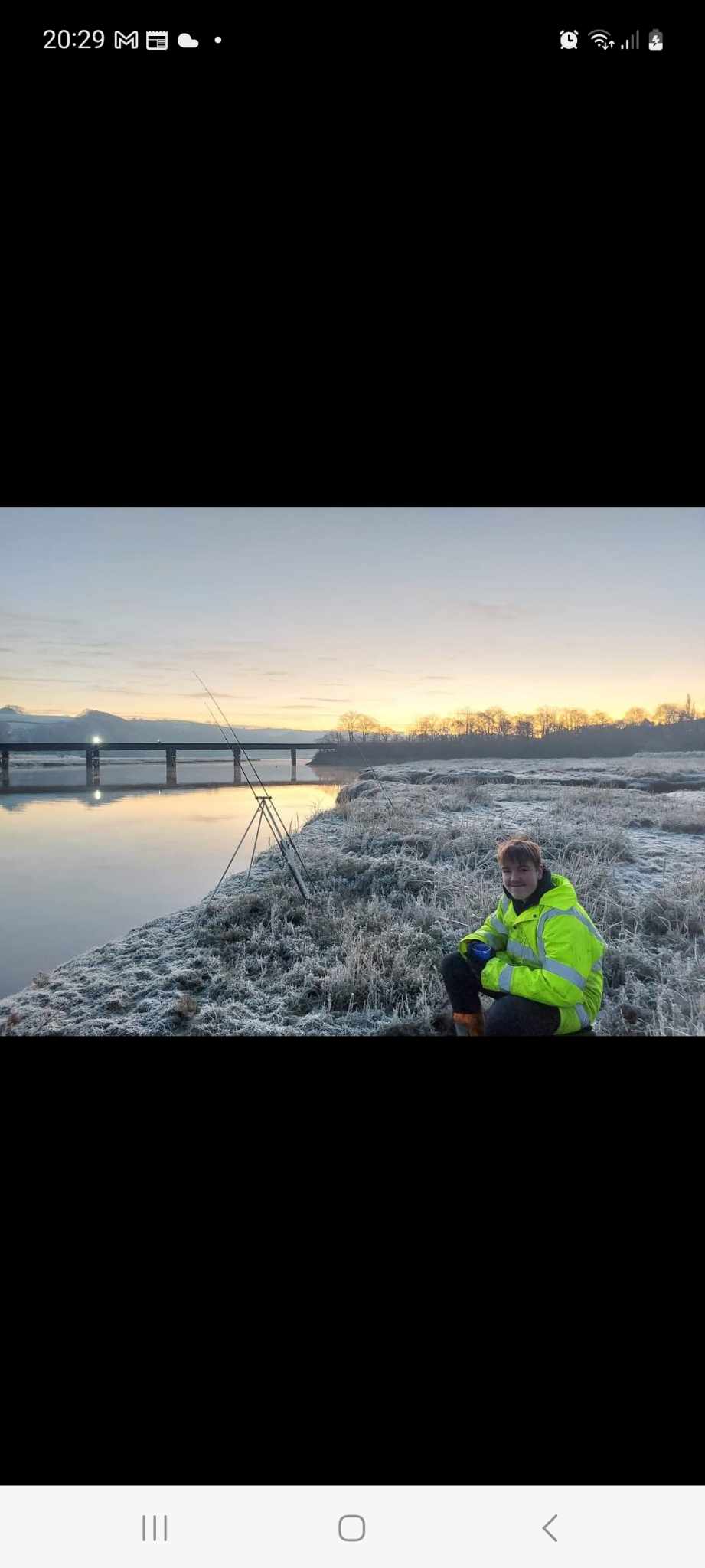
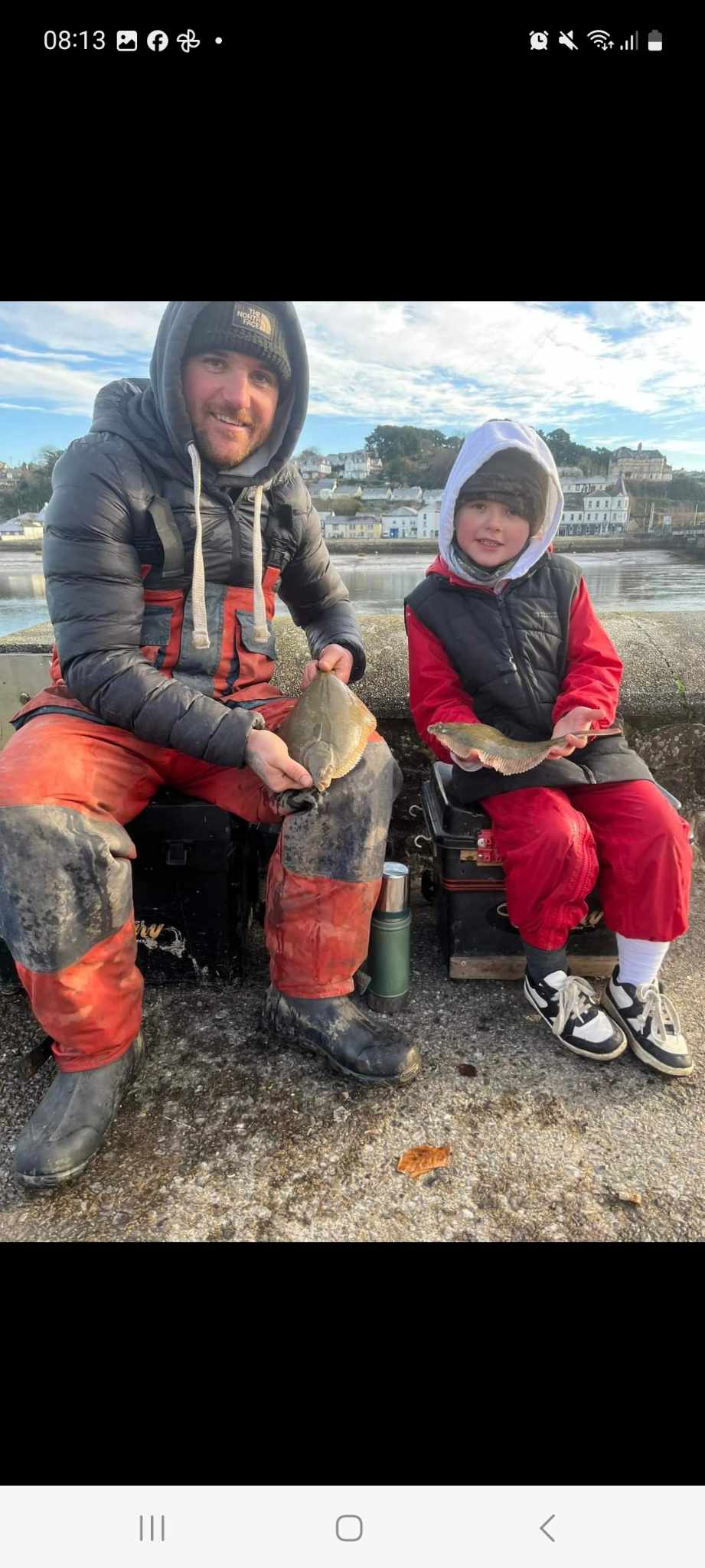
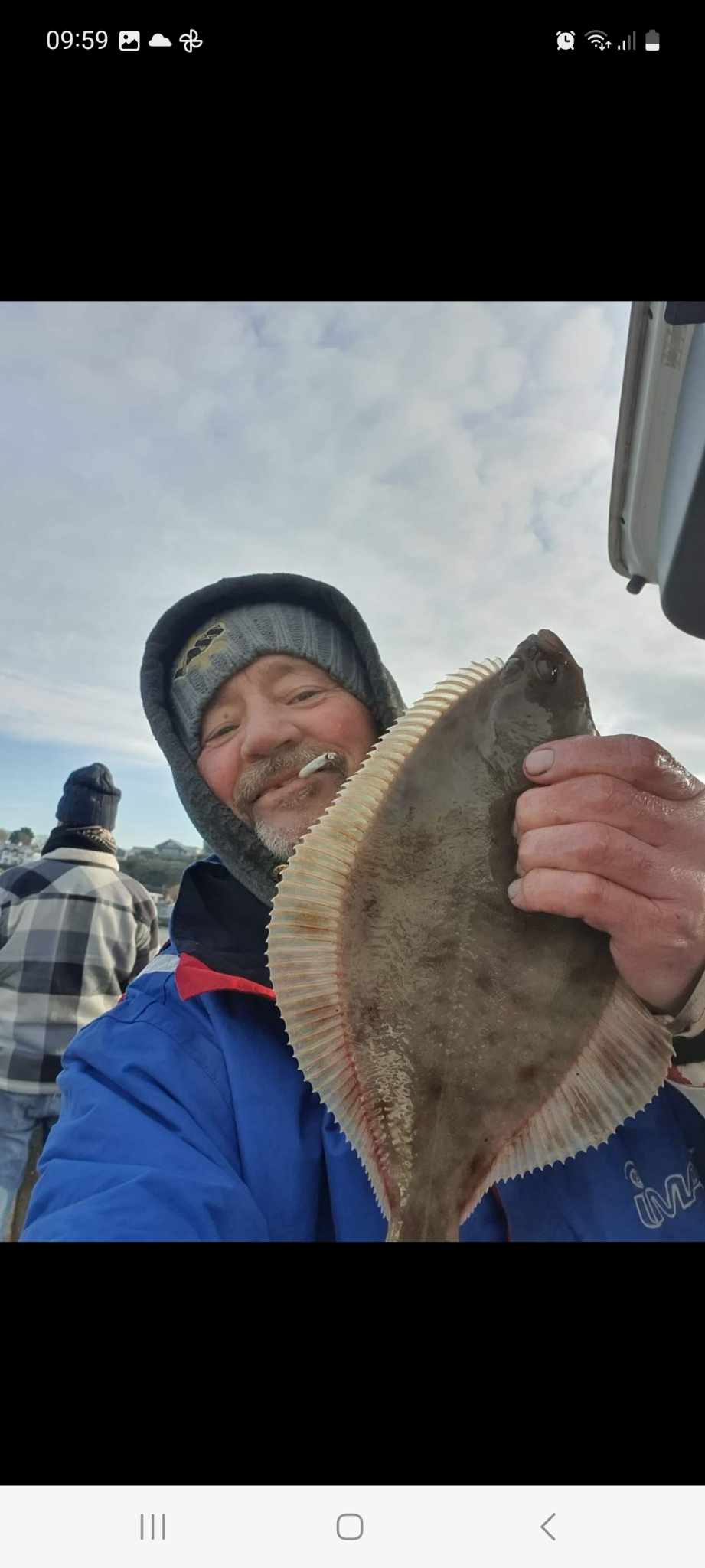
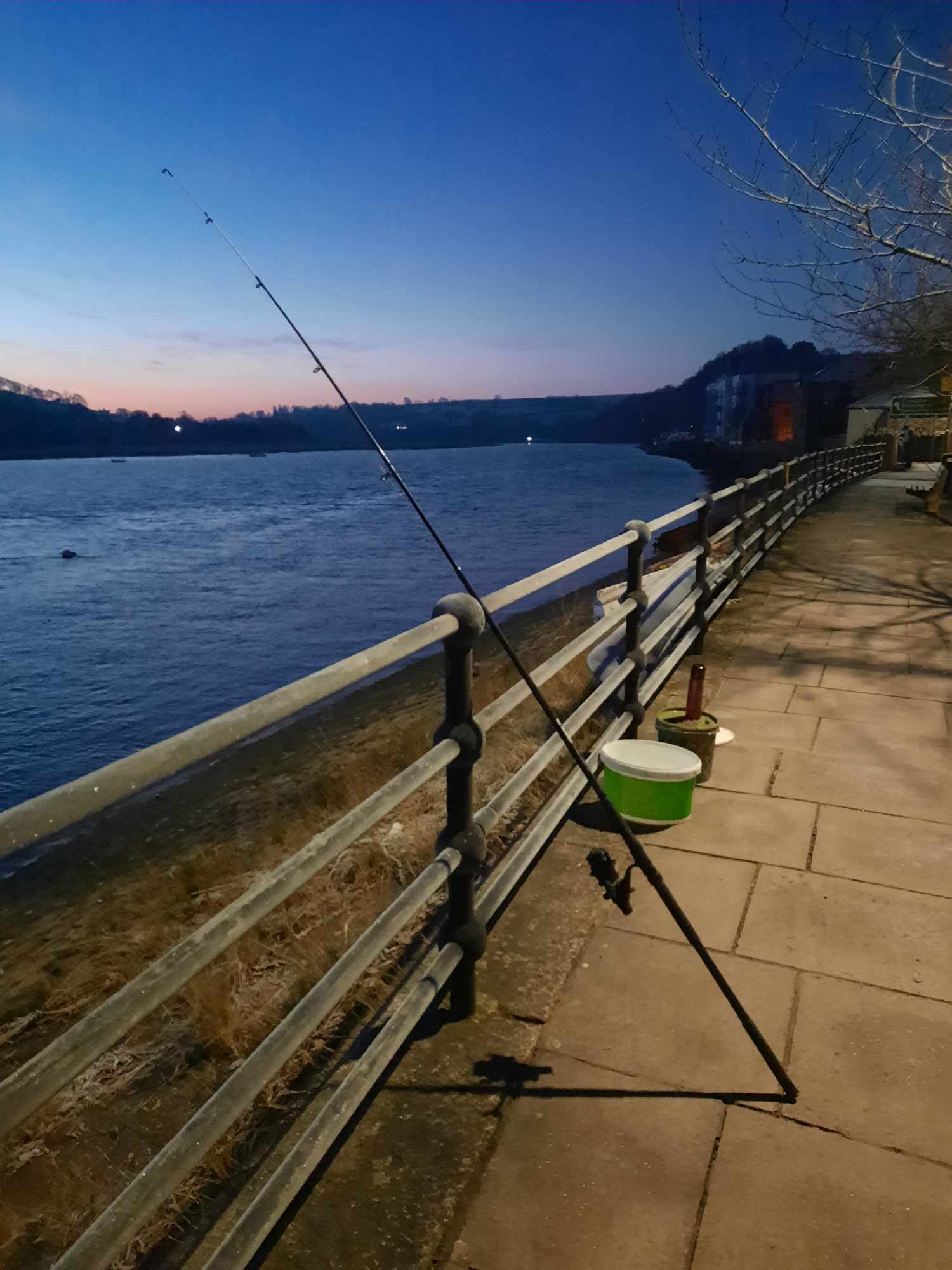
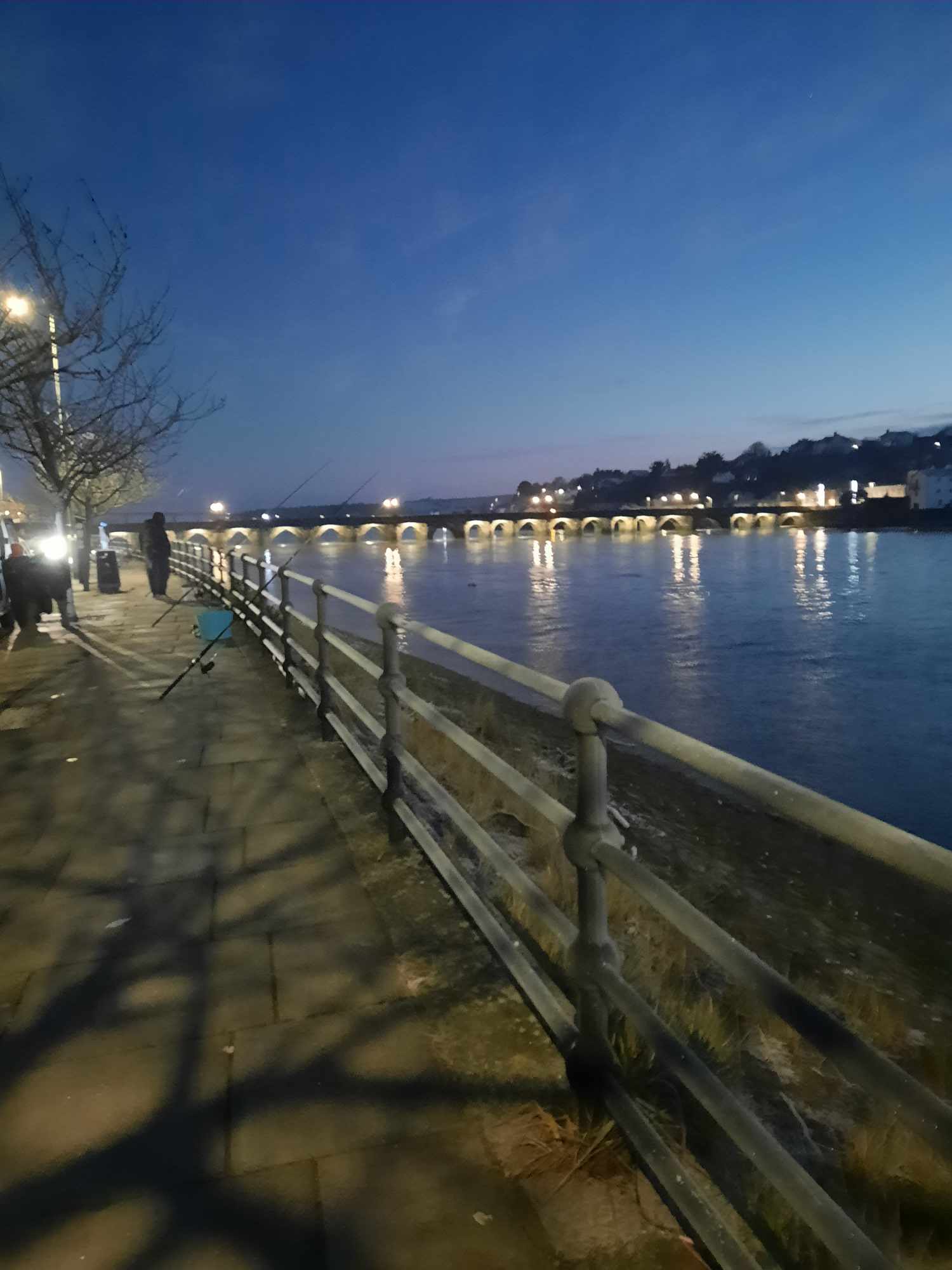
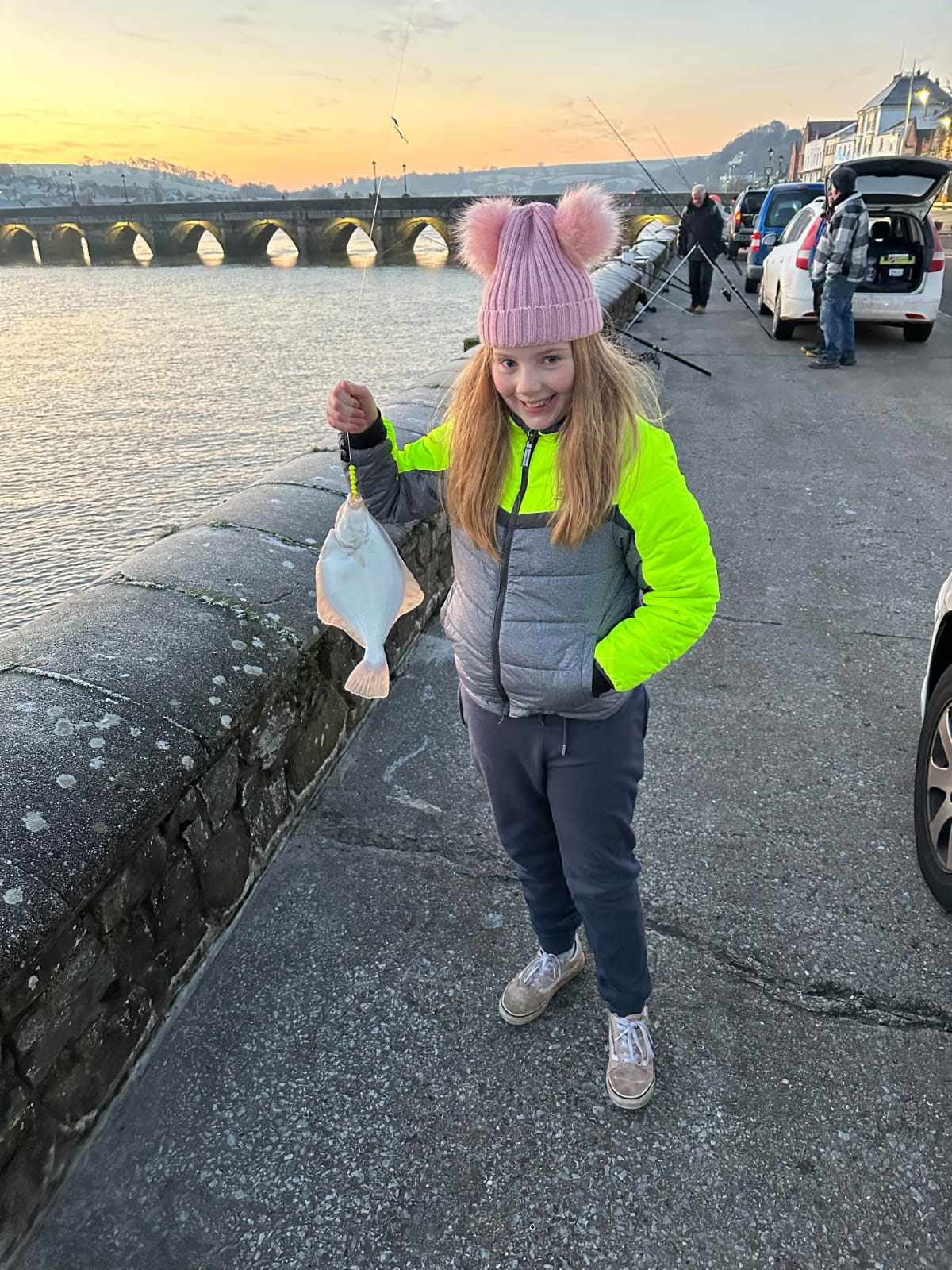
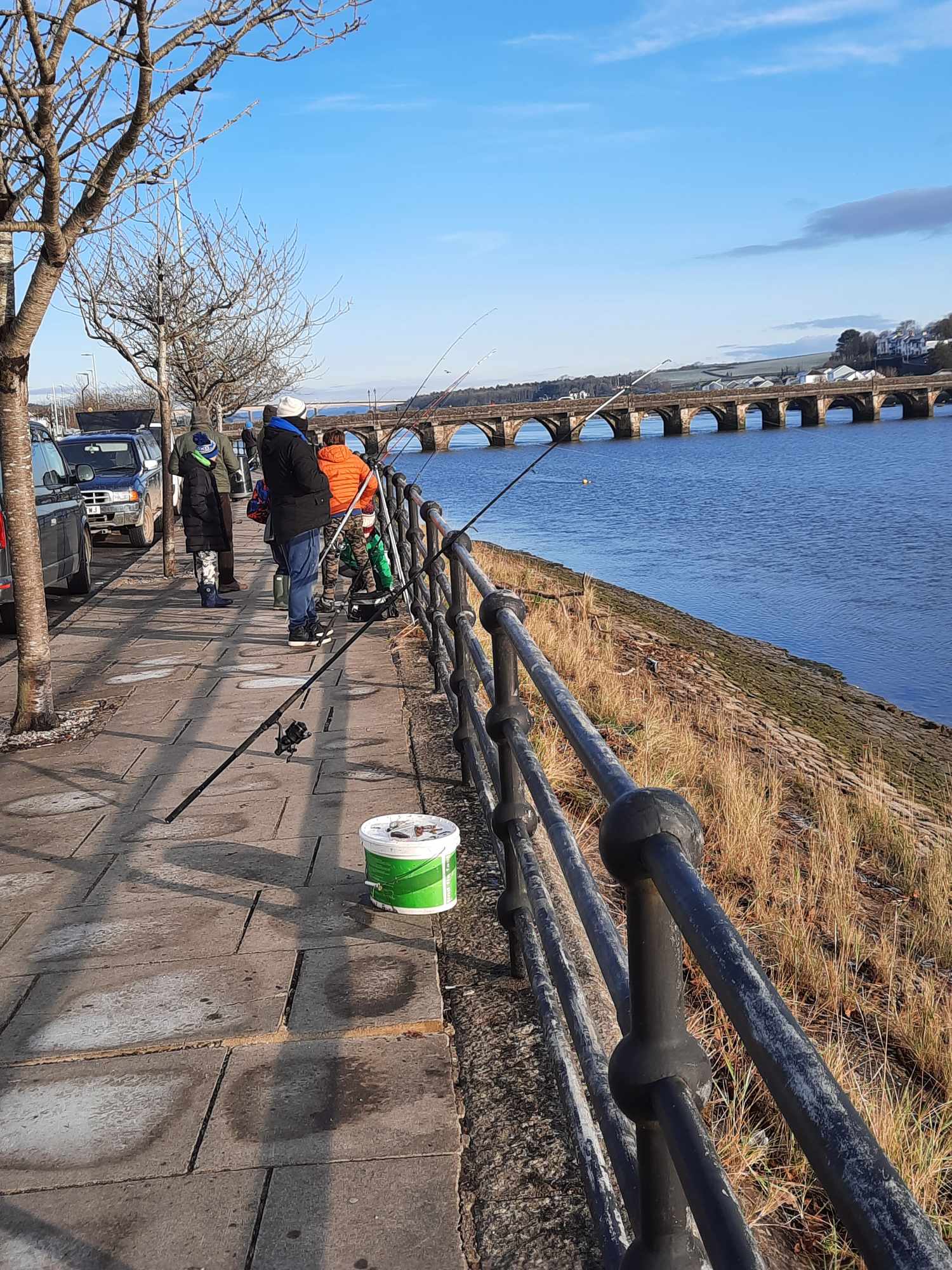

SEA ANGLING RESULTS
Bideford November’s Rover results
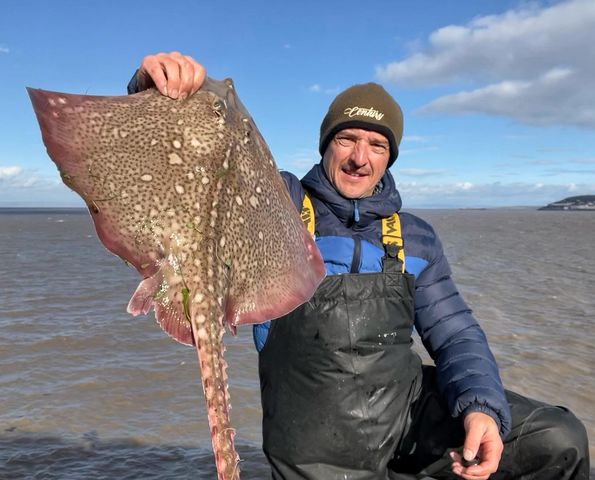
1st Stephen Found Flounder 2lb 4oz 112.4%
2nd Jon Stevens Thornback Ray 101.041%
3rd joint Andrew Clements & Stephen Found Flounder 1lb 13 1/2 92.187%


Appledore Shipbuilders Monthly Sea Rover Results
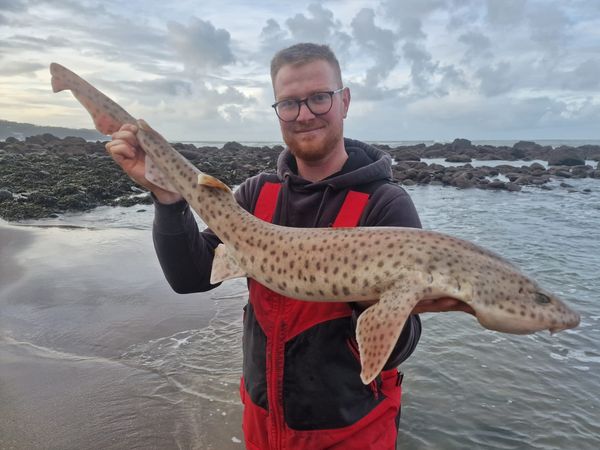
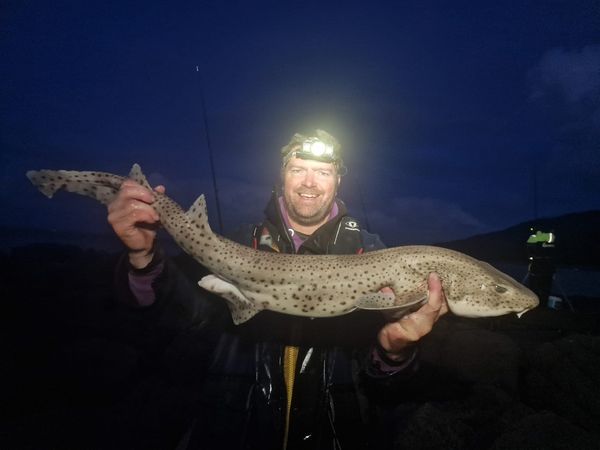
15 members fished the November Rover today.
Some challenging conditions both at sea and In the rivers but most anglers managed to find a few fish. Reports of a lot of tiny bass pinching the baits for the people targetting Flounders and several flounders caught around the 1lb mark.
Best Flounder weighed in was 1lb 10 1/2ozs which wasn’t quite big enough to place.
Winner today was Josh Atkinson with a Bull Huss of 9lb 8ozs. Josh also managed to take 2nd place with another Huss of 9lb 3 3/4ozs.
Andrew Atkinson picked up the final place also with a Bull Huss of 8lb 9 1/4ozs.
Barnstaple Triple Hook Club Open Flounder – Result
1st Mario Manley – Flounder 1lb 77/8oz
2nd Mark Hancock flounder 1lb 73/4oz
3rd – Robbie Hancock – Flounder 1lb 51/4oz
Combe Martin SAC – OPEN RESULT
Combe Martin Sea Angling Clubs Open competition generously sponsored by Quay Sports was won by Daniel Welch who landed three blonde ray scaling 8lb 11oz, 8lb 6oz and 7lb 9oz to take first, second and fourth place. Third was taken by myself with a grey mullet of 2lb 14oz. Competitors also caught conger, dogfish and rockling.
SAC OPEN RESULT
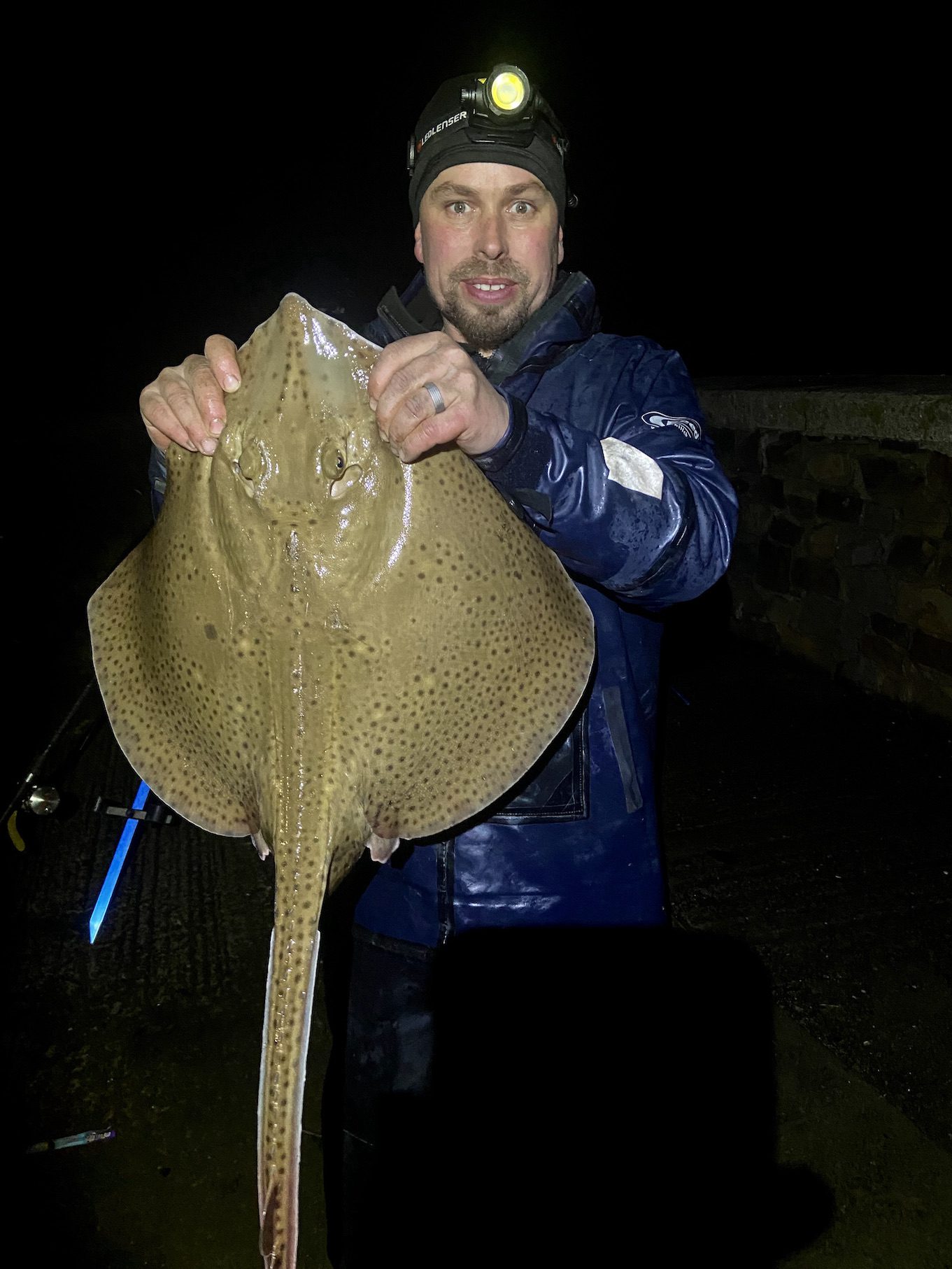
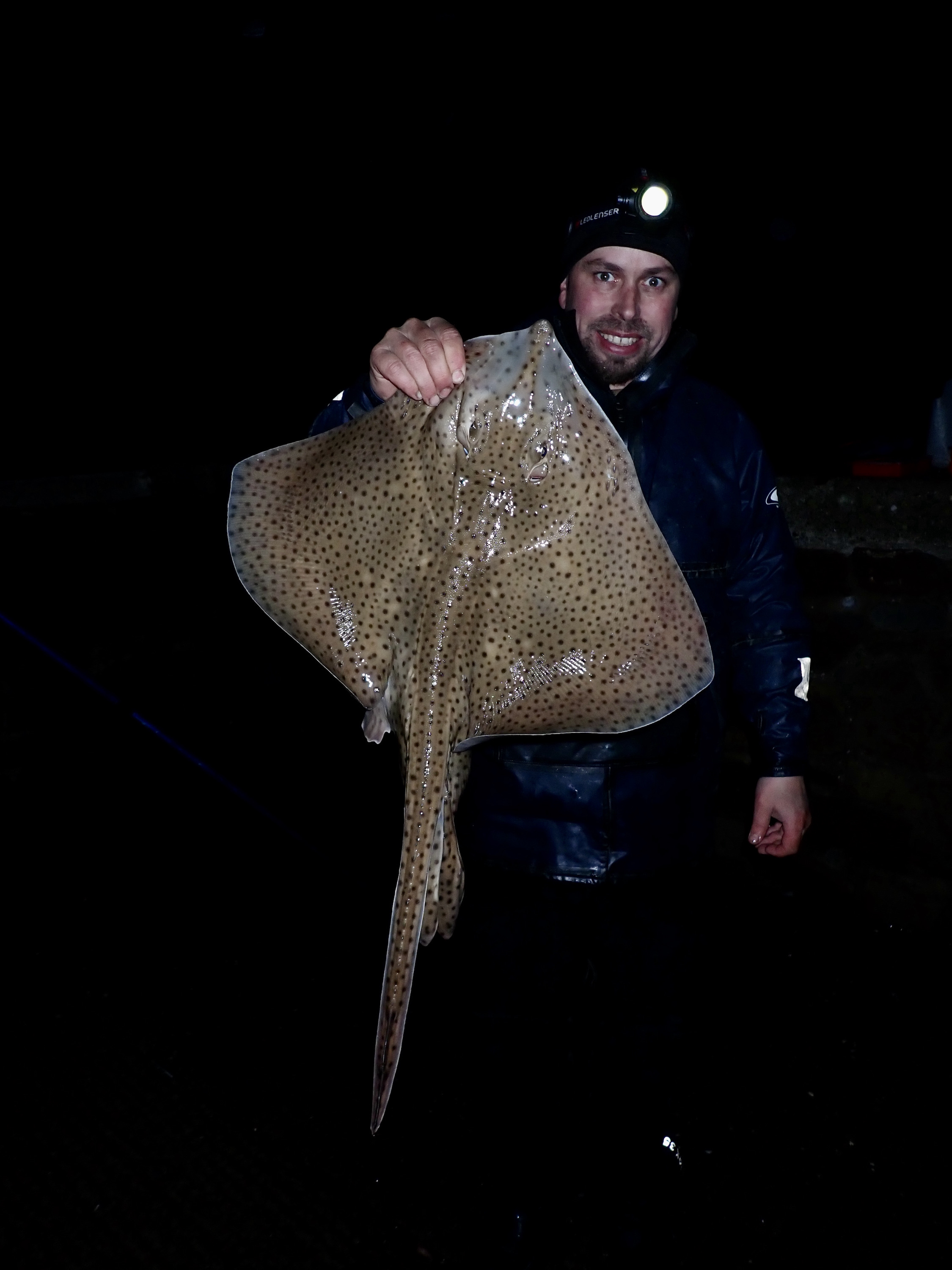
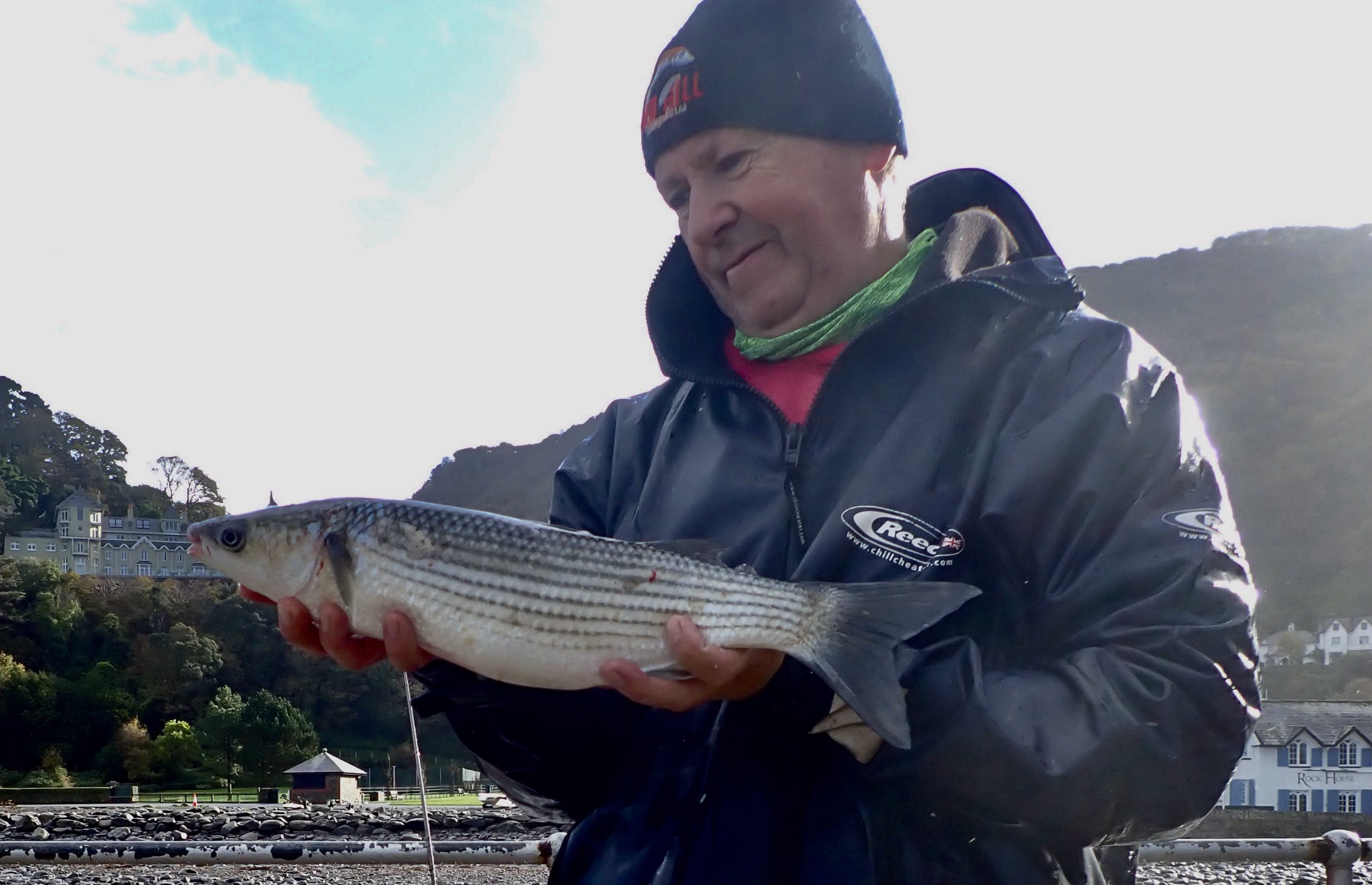
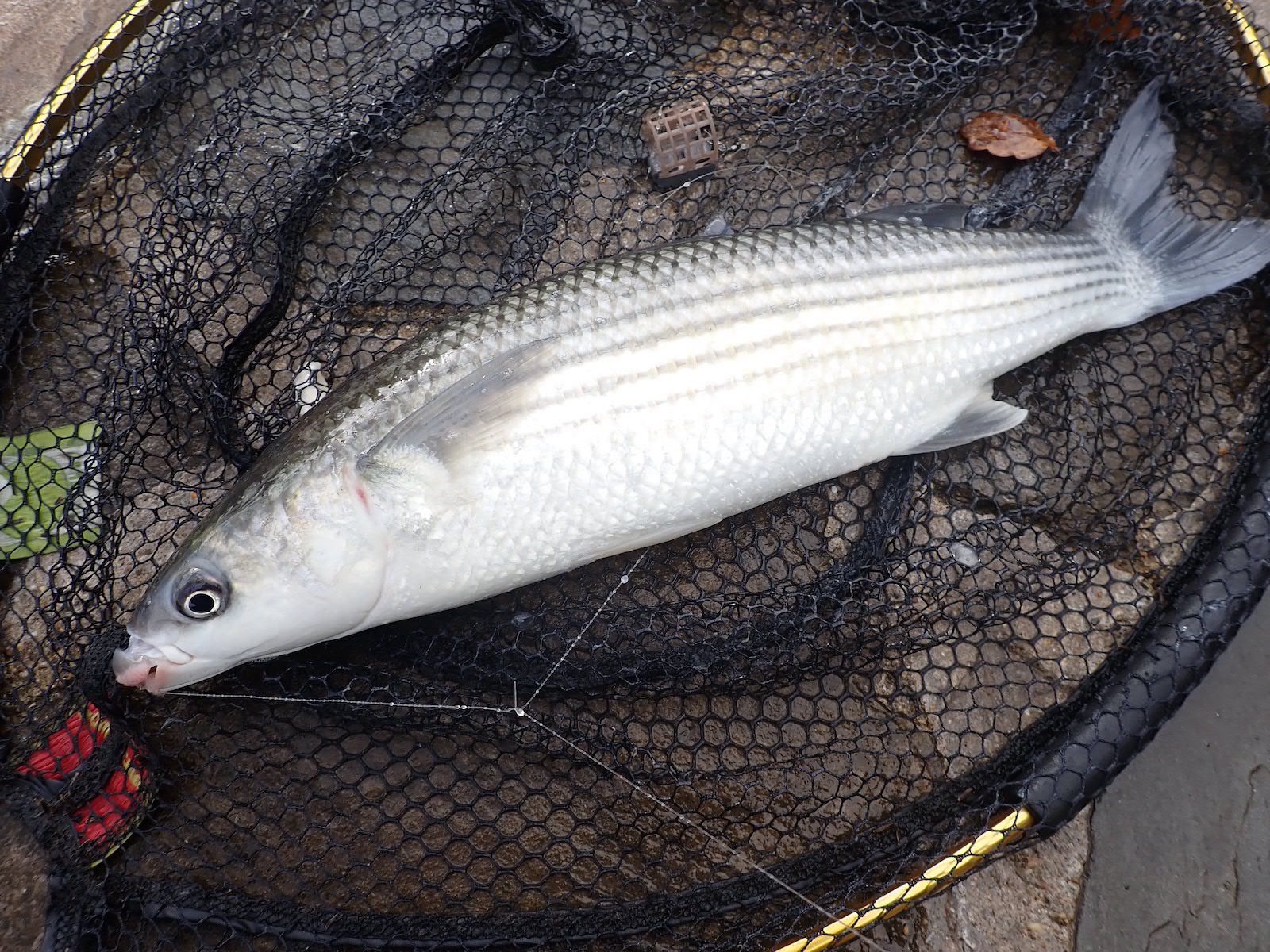
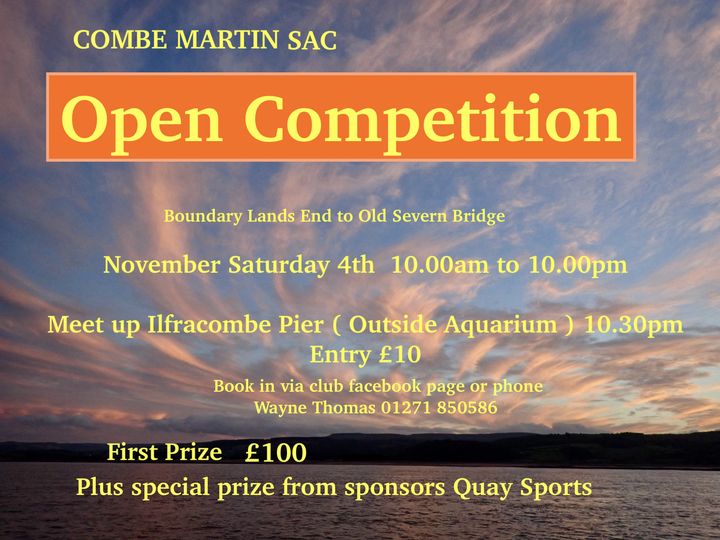
BIDEFORD AGM
A.G.M.
Notice is hereby given that the 2023 AGM will be held at the Bideford Conservative Club on Friday 17th November 19:30 – 20:00 sharp.
Please note that all proposals for changes to our rule’s or applications to join the committee need to be received by our secretary before midnight on Friday 27/10/2023.
Rule changes need a seconder.
Proposals for committee membership must have the agreement of the person, with a proposer and a seconder in writing.
All proposals must be with the secretary via email at [email protected]





